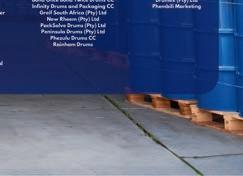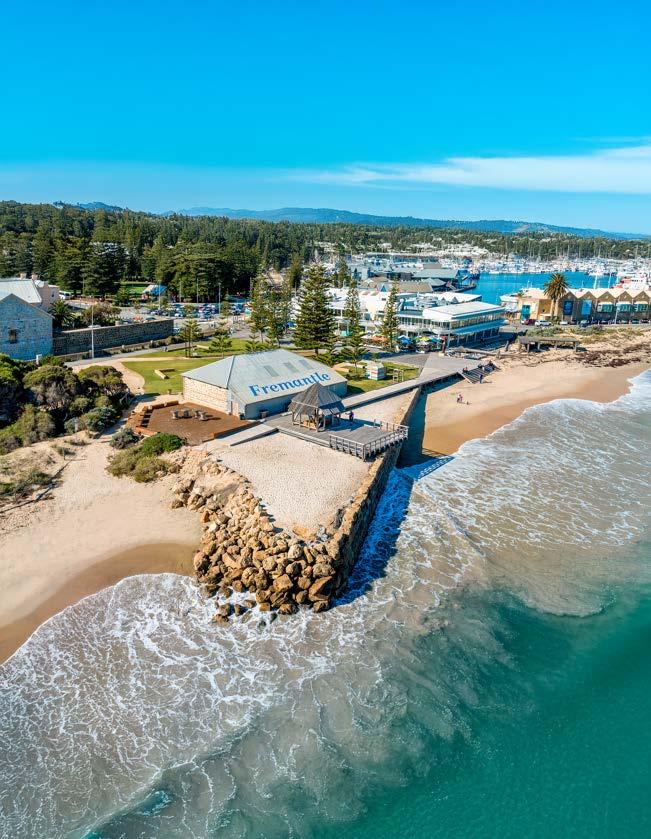




















A LEGACY OF WORLD-CLASS LIVING DESIGNED FOR EVERY GENERATION
Steyn City offers a seamless, multigenerational lifestyle where residents thrive at every stage of life, enjoying the very best in secure, exceptional living.
Stands | Homes | Apartments


































Steyn City offers a seamless, multigenerational lifestyle where residents thrive at every stage of life, enjoying the very best in secure, exceptional living.
Stands | Homes | Apartments












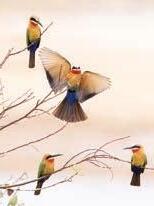
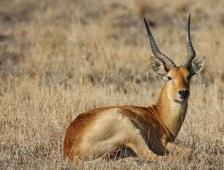

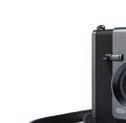

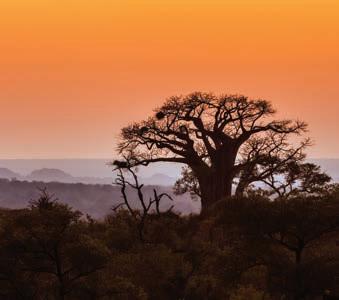

14 Lusaka: Zambia’s vibrant capital
This dynamic city deserves attention as more than just a gateway to safaris.
18 Kafue National Park: the buck stops here
Delve into the wilds of Kafue and discover the diverse antelope – and the conservation e orts that are helping them thrive – in
Zambia’s largest national park
24 Mini safaris, mega memories
The ultimate family-friendly retreat just 90 minutes from Johannesburg, perfect for the school holidays
30 A magical gateway to another world
Keen for an adventure? Fly to Cape Town and, from there, board a charter ight on an expedition alongside scientists and researchers to Deep Field Antarctica
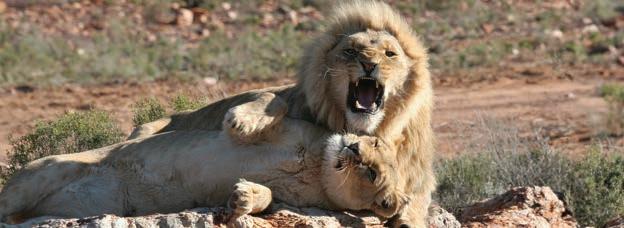
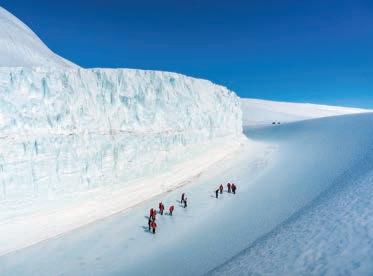
45 The latest news from SAA, plus ight information, routes and travel tips
40 Sip, savour and select A winemaker’s guide to choosing the perfect wine
66 Pack smart, y right
How to make the most of the overhead storage bins on your next ight
70 Africa’s Travel Indaba
74 The connected traveller Gadget gift suggestions for Mother’s Day and Father’s Day
77 Two roads to o -road
Meet the LEXUS GX 550 and the RENAULT DUSTER
80 Column: Jacques Lagrange Dripping in wonder
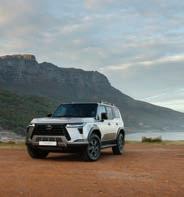

DIANNE TIPPING-WOODS
Kafue National Park: The buck stops here 18 “Writes about wild places and wilder people. Travels light. Sleeps better outdoors. Regularly outsmarted by monkeys – and her kids.”

SBU MKWANAZI
Mini safaris, mega memories 24 “African art, culture and lifestyle enthusiast. Keen traveller. No sense of fashion. Pantsula for life.”

SELENE BROPHY
A magical gateway to another world 30 “Journalist, passionate about travel and tourism, rmly believes ‘it always seems impossible until it’s done’.”
MIKATEKO MEDIA
Executive Director/Managing Director
Desireé Johnson | desiree.johnson@mikatekomedia.co.za
Executive Director/Content Director Ingrid Jones
Contact us info@mikatekomedia.co.za
EDITORIAL
Editor-in-Chief Ingrid Jones
Commissioning Editor Leanne Feris
Designer Hanri Gerischer
Copy Editor Candice Landie
Proofreader Tamlyn Cramer
Digital Editor Liesl Frankson
Contributors Na sa Akabor, Selene Brophy, Jacques Lagrange, Sbu Mkwanazi, Steve Smith, and Dianne Tipping-Woods
ADVERTISING & PRODUCTION
Sales Director Desireé Johnson
Advertising Sales Manager Merle Philander
+27 (0) 83 700 2700 merle.philander@mikatekomedia.co.za
Sales Team
Nick Armstrong
+27 (0) 83 412 4904 nick.armstrong@mikatekomedia.co.za
Siphesihle Magubane
+27 (0) 72 152 5842 siphesihle.magubane@mikatekomedia.co.za
Tafadzwa Shayawabaya +27 (0) 78 480 5713 tafadzwa.shayawabaya@mikatekomedia.co.za
Glenda Kulp
+27 (0) 73 917 2247 glenda.kulp@mikatekomedia.co.za
saasawubona.com
Billy Masemola
+27 (0) 71 562 8564
masemolabmw@gmail.com
Sally Young +27 (0) 82 490 6961 sally.young@mikatekomedia.co.za
Gavin Wildschutt-Prins
+27 (0) 84 701 2395 gavin@gavinprins.co.za
Production Manager Neilton Adams
PUBLISHED BY MIKATEKO MEDIA ON BEHALF OF SOUTH AFRICAN AIRWAYS (SAA)


www.mikatekomedia.co.za | info@mikatekomedia.co.za
SAA EDITORIAL
Vimla Maistry
Head: Group Corporate A airs, South African Airways (SAA)
SAA CONTACTS
Customer Service:
Email: saacustomerservice@ ysaa.com
Mon-Fri 08:00-16:30 (GMT), excluding South African public holidays Twitter: @ ysaa_care Reservations: Daily, including weekends and public holidays 06:00-22:00 (GMT) reservationsjnb@ ysaa.com, +27 (0) 11 978 1111
Voyager: Weekdays 07:00-21:00 (GMT) Saturdays, Sundays and public holidays 08:00-14:00 voyagerservicerecovery@ ysaa.com, +27 (0) 11 978 1234
Baggage Service (lost/damaged): Daily 08:00-16:30 (GMT) baggageservices@ ysaa.com, +27 (0) 11 978 2888
Refunds: Weekdays 08:00-16:30 (GMT), excluding South African public holidays New refund request: www. ysaa.com/refund-application +27 (0) 11 978 1786
Cargo: Weekdays 07:00-19:00 (GMT), Saturdays, Sundays & South African public holidays 07:00-14:00 saacargoreservations@ ysaa.com, +27 (0) 11 978 3366
Website queries: webhelp@ ysaa.com
PRINTED BY
The views expressed in this publication do not necessarily reflect those of the Board and Management of South African Airways and Mikateko Media (Pty) Ltd, nor do we take responsibility for third-party advertising and pricing supplied. All correspondence regarding the publication should be directed to Mikateko Media.
FROM THE FIRST MOTOR GRADER IN 1967 TO THE LATEST P-TIER TODAY.
Yellow iron was never made to stay clean. It was built to move dirt, shape roads, and handle the harshest jobs Africa can throw at it. The new P-Tier motor graders bring decades of John Deere engineering to your site — with even more power, even more precision, and the kind of durability that turns dust into progress. This grader is ready to work as hard as you do.
StructurALL™ Standard Warranty
We back what we build, every grader includes a 36 Months/10,000-hour structural warranty – because yellow iron might love dirt, but it never backs down. *T&C’s Apply
36 MONTHS /10 000-HOURS

StructurALL™ STANDARD WARRANTY

*Terms and conditions apply. (Available at https://www.deere.africa/en/) https://www.deere.africa/en/construction/ I cfjohndeereame@johndeere.com I
JohnDeereAME JohnDeereJohnDeereAfrica

Recently, the world’s top diplomats gathered in Johannesburg, South Africa, at the National Agriculture Sports Recreation Events Centre (NASREC), a place where history and hope intersect. Built to bridge the apartheid-era divides between Johannesburg’s north and south, NASREC is more than a venue—it is a symbol of what humanity can achieve when we choose unity over division, progress over stagnation.
By Ronald Lamola, Minister of International Relations and Cooperation, Republic of South Africa
Just a stone’s throw away from NASREC lies Soweto, South Africa’s largest township, a place born of segregation but now a beacon of resilience. It is home to two Nobel Peace Prize laureates, Archbishop Desmond Tutu and Nelson Mandela, whose legacies remind us that even the deepest divides can be overcome. NASREC’s location is no accident. It stands as a powerful metaphor for the work ahead: bridging divides—historical, economic, and geopolitical—to create a world that works for all.
As South Africa navigates its Group of Twenty (G20) Presidency, we carry this spirit of unity into our mission. Our theme—Solidarity, Equality, Sustainability—is not just a slogan; it is a call to action for a world at a crossroads.
The urgency of this moment cannot be overstated. We are halfway to the 2030 deadline for achieving the Sustainable Development Goals (SDGs), yet the United Nations (UN) Secretary-General, António Guterres, has issued a stark warning: “We are leaving more than half the world behind.” His recent report paints a grim picture: only 12% of SDG targets are on track, while 30% have stalled or regressed. Without immediate action, the 2030 Agenda risks becoming an epitaph for what might have been.
The challenges we face are not isolated; they are interconnected and escalating. Geopolitical divisions are widening, economic tensions are rising, and the devastating impacts of climate change are accelerating. These crises threaten to derail progress on poverty
eradication, gender equality, and global peace. The G20, as a forum for international economic cooperation, must rise to the occasion. We cannot afford to let these fractures deepen.
South Africa’s G20 Presidency is guided by the philosophy of Ubuntu—a profound African concept that means “I am because we are.” It speaks to our shared humanity, our interconnectedness, and our collective responsibility to one another. These values are reflected in our G20 presidency’s theme of Solidarity, Equality, Sustainability.
Solidarity demands that we recommit to multilateralism and dialogue. In a world increasingly fractured by trade wars, ideological divisions, and political intolerance, we must find common ground. The G20 must lead by example, fostering collaboration to restore stability and shared purpose.
Equality requires us to confront the stark disparities between the Global North and Global South. Africa, for instance, contributes the least to climate change yet bears its harshest consequences. Climate-related costs consume up to 5% of the continent’s gross domestic product, yet Africa received a mere 2% of global clean energy investments between 2015 and 2022. This inequality is not just unjust—it is unsustainable.
Sustainability is the cornerstone of our collective future. The G20 must prioritise financing for development, debt relief, and the transition to clean energy. High
financing costs and unsustainable debt burdens are stifling progress in developing economies, diverting resources away from critical development needs. We must reform the global financial architecture to ensure that no country is left behind.
The G20—composed of states from both the Global North and Global South—has the unique opportunity to shape a more equitable and sustainable world. By focusing on solidarity, equality, and sustainability, we can address the root causes of global instability and inequality.
First, we must recommit to the principles of multilateralism. The United Nations remains the primary forum for maintaining international peace and security, protecting human rights, and promoting sustainable development. However, the UN must be reformed to reflect the realities of the 21st century. This includes revitalising the General Assembly, ensuring equitable geographical representation in the Secretariat, and reforming the Security Council to make it more representative and democratic.
Second, we must prioritise conflict resolution and peacebuilding. South Africa is deeply concerned by the deteriorating conflicts in Africa, particularly in Sudan and the eastern Democratic Republic of the Congo (DRC). The recent loss of 14 South African soldiers
serving in the DRC with the United Nations Organisation Stabilisation Mission in the DRC and the Southern African Development Community Mission in the DRC is a stark reminder of the human cost of conflict. We call on the G20 to support efforts to “silence the guns” in Africa and achieve inclusive development and prosperity.
Third, we must address the global debt crisis. The current system is fundamentally flawed, with high financing costs and debt service obligations diverting resources away from development needs. The G20 should advance sustainable solutions to tackle structural deficits and liquidity challenges, extending debt relief to developing economies.
As South Africa assumes the G20 Presidency, we are committed to playing a bridge-building role between the Global North and South. The challenges we face are immense, but they are not insurmountable. By embracing the principles of solidarity, equality, and sustainability, we can build a world that leaves no one behind. The G20 must lead the way, fostering dialogue, cooperation, and shared purpose to address the interconnected crises of our time.
In the words of Nelson Mandela, “It always seems impossible until it is done.” Let us seize this moment to bridge divides, heal our planet, and create a future of dignity and opportunity for all.


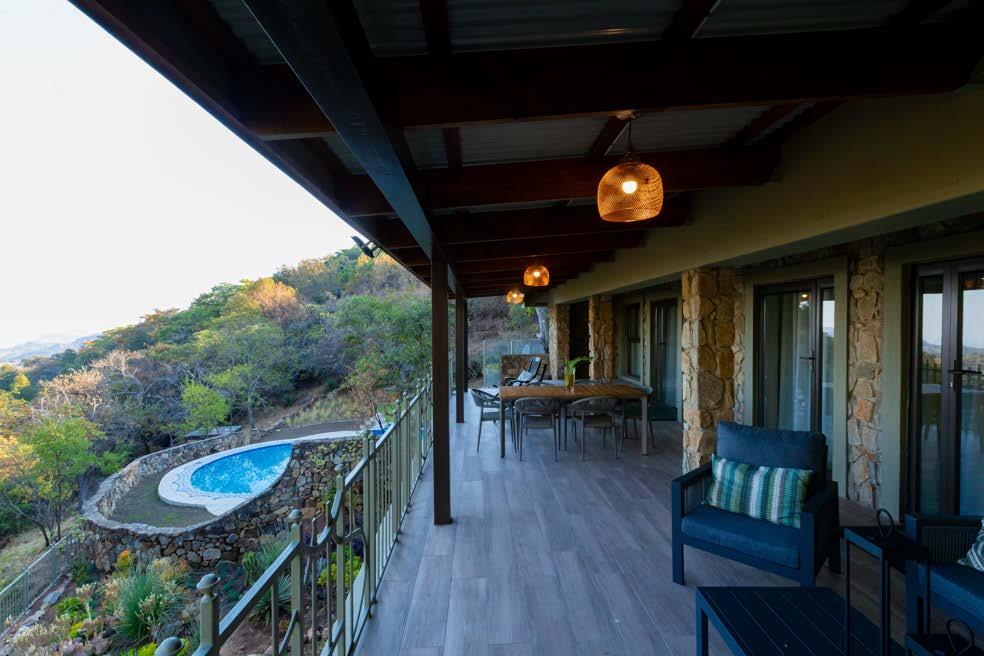


who is part of an events management company went on a work trip to Zambia where they organised and set up for a weekend wedding celebration on the banks of the Zambezi. At the beginning and end of every day of their week-long stay in Zambia, she would send me pictures of the sunrise and sunset and marvel at the casually grazing zebras that came so close to set up.
It took me back to a few years ago when I attended a leadership conference in Zambia and we had the privilege of staying at the Royal Livingstone. I remembered my own sense of awe at the first breakfast out on the lawn and the zebras that grazed leisurely between the tables without bothering the guests. One night we were sipping cocktails out on the deck with the shallow side of the Zambezi flowing underneath and an elephant suddenly, without making a noise to alert us of its presence, appeared from underneath the deck pushing its trunk across the banister. We almost had mini heart attacks witnessing this spectacle playing off against an African sunset. It was like an animation scene from The Lion King. Memories I will treasure forever.
It also reminded me about my youth and how precious a time it had been. Now, I’m a mother who wants only the best for all young people who live in a constantly changing world with little time to chase sunsets and watch zebras graze.
A toast to the youth to inspire them to chase more sunsets and less algorithms. Just like a sunset, it’s over in a blink.
Ingrid Jones & the team

There’s so much to see, and so many uniquely South African experiences to explore.
Whether you are traveling in a group or alone, we want to ensure you have an unforgettable stay as you explore our beautiful country responsibly.
Information on our top tourism attractions and activities is available at our Visitor Information Centre (VIC) in all our airports, and on www.southafrica.net
Our tourism offerings are best explored with the aid of certified tourist guides. We have more than 10 000 certified tourist guides across the country that can easily be identified with their unique badge and identification cards. Visit www.tourism.gov.za to access information on guides near your destination. Enjoy your stay in Mzansi!
LOCATION:
» Update the GPS App on your mobile device to accurately navigate through our country
CLIMATE: South Africa’s climate can get extremely hot and dry
» Wear sunscreen and a hat
» Wear the appropriate clothing and foot wear for outdoor activities
» Carry enough water to stay hydrated
» Avoid drinking water from rivers and streams
BE WATER WISE:
» Read and follow the signs to ensure an enjoyable experience at the Beach
» Only swim in designated areas
» Take care when swimming as rip currents can pull you out to sea
» Lifeguards are on call to ensure your safety
PERSONAL
We care about your safety
» Ensure your personal possessions are with you at all times
» Keep passports and important documents in a safe at your hotel, and carry a copy whilst out and about
» Do not share your banking details or pin code with anyone
» Alert your hotel before going for a walk alone, or an excursion
Useful contacts: Should you require support or find yourself in distress, contact the authorities for assistance: Police (SAPS): (T) 10111 | Ambulance/Fire: (T) 10177 | Covid-19 emergency no: 0800 029 99 Tourism Complaints: (T) 012 444 6000 or 0860 686 747, E-mail: complaints@tourism.gov.za

•• Lusaka National Museum provides a good introduction to Zambia’s history and culture. The thoughtfully curated exhibits trace the nation’s journey from pre-colonial times through independence and into the present day.
•• Kabwata Cultural Village offers an immersive experience into traditional crafts and performance. Watch artisans carve intricate wooden sculptures or weave elaborate baskets, with opportunities to purchase directly from creators. On weekends, traditional dance performances electrify the atmosphere.
•• Munda Wanga Environmental Park combines a wildlife sanctuary with botanical gardens. The rehabilitation centre provides refuge for injured and orphaned wildlife, offering close encounters with indigenous species in a conservation-focused setting.
No visit to Lusaka is complete without experiencing its busy markets. Lusaka City Market is the commercial heart of the city. Navigate the labyrinth of stalls selling everything from fresh produce to electronic gadgets.
For handicrafts and souvenirs, Sunday Crafts Market at Arcades Shopping Mall showcases the work of local artisans. Look for distinctive Zambian crafts including copper jewellery, Tonga baskets, and hand-printed textiles.
Zambian cuisine deserves exploration, with nshima (made from maize flour) serving as the staple accompaniment to most meals. Marlin Restaurant offers an accessible introduction to local dishes, including delicious ifisashi (greens in peanut sauce) and village chicken stew.
For international options, the restaurant scene has expanded dramatically in recent years. Mint Lounge serves creative fusion dishes in a stylish setting, while the cafés of Arcades and East Park malls offer familiar comfort food with a Zambian twist.
Don’t miss sampling the local Mosi lager, named after the local name for Victoria Falls (Mosi-oa-Tunya, “The Smoke That Thunders”).
Less than an hour’s drive from the city, Lilayi Elephant Nursery in Lusaka National Park provides a touching opportunity to observe orphaned elephant calves during their midday feeding. This conservation project rehabilitates young elephants for eventual release back into the wild.
More adventurous travellers can head to Chaminuka Nature Reserve (about 30 minutes from Lusaka) for wildlife viewing, cheetah experience, bush walks and birdwatching, horseback safaris, and fishing in a tranquil setting that feels worlds away from the urban hustle.
To truly experience Lusaka, venture off the tourist track. Spend an evening enjoying live music at one of the city’s jazz clubs or join in the excitement of a soccer match at Heroes Stadium, where local teams are passionately supported by their fans.
As Zambia’s political and economic hub, Lusaka’s rapid development means returning visitors find new restaurants, galleries, and entertainment venues with each visit.
Lusaka enjoys a pleasant climate year-round, though the dry season (May to October) is most comfortable for exploring. During this period, days are sunny with temperatures between 20-25 degrees Celsius.The rainy season (November to April) brings lush greenery but can hamper outdoor activities with afternoon downpours.
The city sprawls across a wide area, making transportation essential. While taxis are readily available, negotiate fares before starting your journey. You could also make use of ride-hailing apps as a convenient alternative.
Modest dress is appreciated, particularly when visiting markets or residential areas. Always ask permission before photographing people, especially in markets and traditional settings.
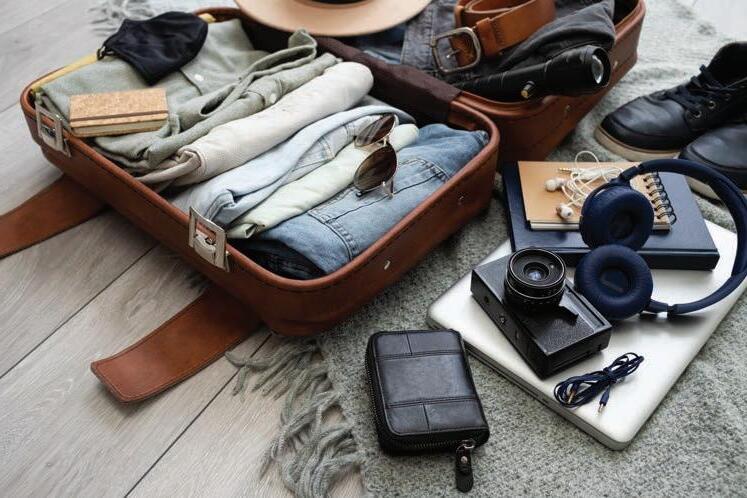
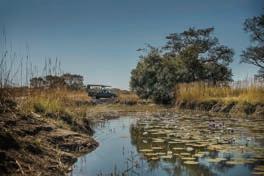



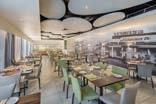


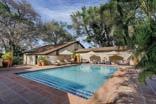








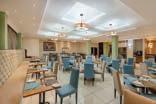

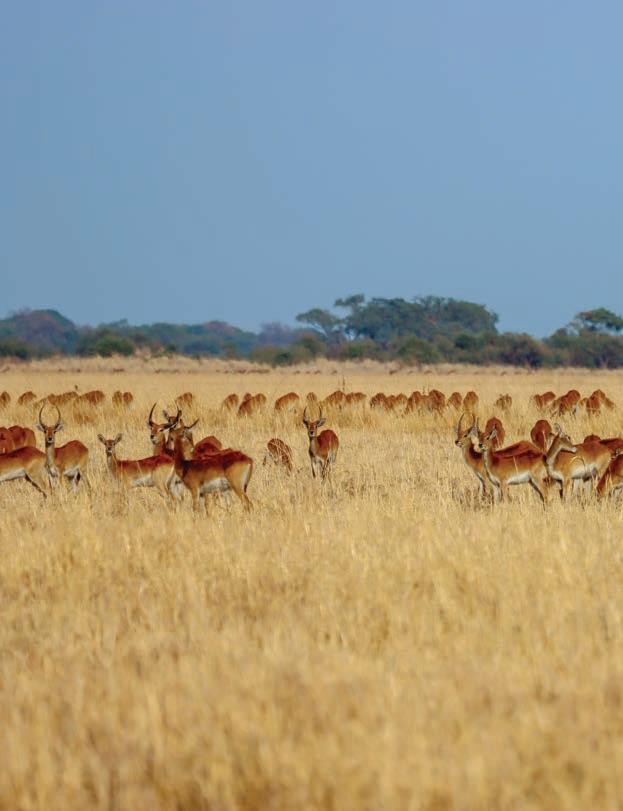
their russet backs catching the light and shadows taking form. At first glance, I thought I saw a small group, but as I looked longer, more appeared. Without binoculars, the distant shapes blurred into the horizon once again.
“How many do you think there are?” I asked Chrispin Ndlovu, our guide from Mozhi Bushcamp.
“Can you count the grass?” he replied.
Chrispin explained that the semi-aquatic grazers were red lechwe. Having moved to Zambia from Zimbabwe, one of his greatest joys as a guide is spotting new antelope species thriving in this wet, wild landscape managed by African Parks in partnership with Zambia’s Department of National Parks and Wildlife.
Kafue National Park has been a globally significant protected wildlife area for over a century. Many locally based NGOs, such as WWF, The Nature Conservancy, Musekese Conservation, Game Rangers International, Panthera, and the Zambian Carnivore Programme, have played a role in maintaining its wildlife populations, even when faced with threats like poaching.
Driving deeper into the plains, we saw the red lechwe up close. Their vivid chestnut coats were accented by white underparts, throat patches, and facial markings. Black stripes lined the front of their legs. Male lechwe stood out with long, sweeping horns and proud postures. Occasionally, one darted head-down across the road, but most fed near this seasonal wetland’s quick-drying streams and rivulets, waiting for them to fill with the summer rains. Their long, slender legs and splayed hooves are perfectly adapted to wet environments.
Busanga spans roughly 720 square kilometres in northern Kafue, Africa’s second-largest national park. The Lufupa River and its tributaries flood the plains yearly, making them accessible only between April and October when the waters recede. In addition to lechwe and puku, we spotted kudu, sable, roan antelope, reedbuck, duiker, oribi, zebra, buffalo,
wildebeest, elephants, and extraordinary birdlife.
Kafue National Park hosts the highest diversity of antelope in southern Africa, with 21 species. This is because of the park’s large size (22,400 square kilometres), spanning Africa’s sub-equatorial to sub-tropical rainfall zones, and its exceptional diversity of vegetation and habitats, including extensive areas of miombo, Kalahari, savannah and mopane woodlands, riparian forests and floodplains, swamps, and wetlands, which remain intact and unencroached, says ecologist and conservation biologist Richard Jeffery. These varied habitats – interspersed between the Kafue, Lunga, and Lufupa rivers – uniquely support this wide variety.
In the park’s wetland areas, such as the Busanga swamps and floodplains, Jeffrey explains three species of shorter, stocky antelope (red lechwe, puku, and Defassa waterbuck) occur together with little competition. “Red lechwe thrive on emergent grasses of wetlands’ seasonally expanding and receding floodplains; puku on a broad range of floodplain grasslands and dambos, as do waterbuck, but with a greater affinity for the grassland interface between woodlands, dambos, and floodplains,” he notes. Meanwhile, the sitatunga is the most adapted antelope to aquatic habitats and does not compete with the other antelope. Instead, it lives deep in papyrus swamps, swimming freely between foraging areas for its preferred diet of herbs, sedges, and grasses, and deep cover where it raises its young.
While Busanga’s abundance is unrivalled, sightings in other areas were just as captivating: bushbuck at Kikuji Camp on the Lunga River, kudu and roan in the savannah woodlands around Mukambi Safari’s Fig Tree Bush Camp, lion, leopard, and cheetah from Classic Zambia’s Ntemwa-Busanga Bush Camp, and herds of sable near McBride’s Camp.
Recently, 400 Kafue lechwe were released around Lake Itezhi-Tezhi in the southern part of the park to provide additional sub-populations of this threatened antelope. The red and Kafue lechwe in the park do not overlap in distribution. Kafue lechwe, related to the more common red lechwe, is an endemic subspecies. According to the Endangered Wildlife Trust, they are listed as vulnerable, declining from around 80,000 in the 1970s to about 23,000 today. Its distribution was recently restricted to the Kafue Flats wetlands (outside Kafue National Park), but historically included what is now Kafue National Park.
“This was the basis for their re-introduction”, said Craig Reid, Park Manager at Kafue National Park. “African Parks has worked hard on providing a secure environment for natural populations of all wildlife, inclusive of antelope,
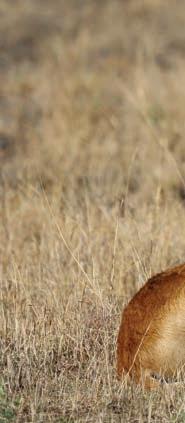
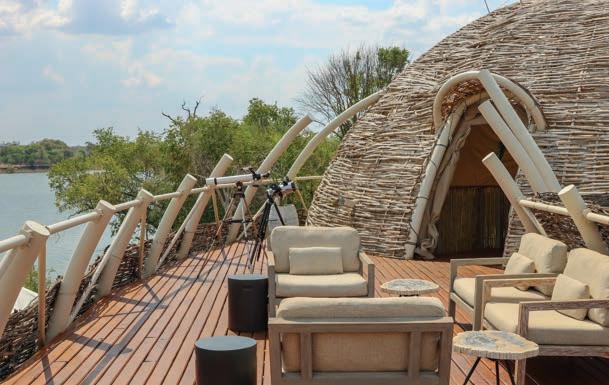
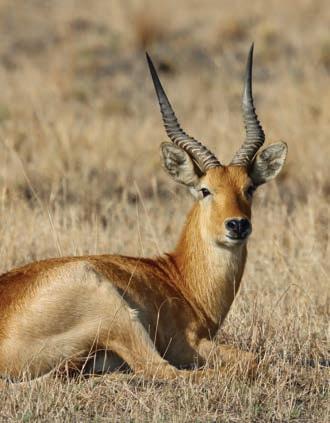
PREVIOUS PAGE: Red lechwe dispersed on the Busanga Plains as far as they eye can see. THIS PAGE, CLOCKWISE FROM ABOVE: The star deck at Ila Safari Lodge doubles as a wonderful daytime lookout over the Kafue River and the bush beyond; guide James Mulenga from Classic Zambia's
identifying a spider lily that had emerged after the first rains; a territorial male puku antelope surveying his domain.
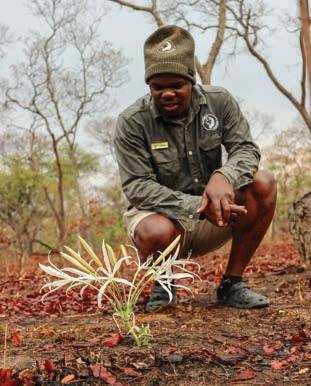
to start their natural population recovery process. To help this process along and boost some of the key ecosystem processes of the park we translocated the Kafue lechwe, restoring the population in its former range. The next major target is the imminent translocation of around 1,300 wildebeest and 150 zebra to Kafue which will further boost wildlife numbers in this iconic park.”
Antelope matter in a large system like Kafue, Jeffery suggests, “because naturally occurring wildlife in their natural habitats make up by far the most productive form of sustainable land use and protection of ecosystem services supporting life and livelihoods on our planet.” Yet, they face growing threats from poaching, habitat loss, and climate change. Conservation efforts in Kafue are vital to ensure these species – and the ecosystem they support – continue to thrive.
Kafue has a mix of luxury and bush camps, with options for hosted and self-drive safaris. Many camps close during the rainy season, so plan your travel accordingly.
Wilderness Shumba: Front row seats to dramatic and thrilling wildlife encounters in one of Africa’s most exclusive destinations: Kafue’s Busanga Plains.
McBrides’ Camp: A charming, classic camp located in a remote area on the Kafue River.
Mozhi Bush Camp: Family-friendly accommodations, including Mozhi House, two-person luxury tents, and Bongololo Campsite, (with WiFi).
Musekese Camp: An exceptional camp for safari-goers seeking an enriching, conservation-focused experience with excellent guiding.
Mukambi Fig Tree Bush Camp: Features treehouse-style rooms, a star bed, and a pool, offering a unique character without being over-the-top.
Ila Safari Lodge: A luxury camp offering gourmet meals, and safari innovations like electric vehicles and boats for silent exploration.
Nanzhila Plains Safari Camp: An authentic safari experience with access to diverse wildlife and bird species in the south of the park.
Konkamoya Lodge: On the shores of Lake Itezhi-Tezhi in southern Kafue National Park that’s renowned for wildlife sightings and Italian cuisine.
For more info, visit: africanparks.org/the-parks/kafue and Africa’s Eden: africaseden.travel
On the Busanga Plains, red lechwe is almost guaranteed, but spotting the elusive sitatunga is possible if you’re very lucky. Secretive and shy, this spiral-horned wetland specialist moves with a gait that looks like it can “walk on water”.
Sable and roan, often shy, linger at the edges of woodlands and wetlands. A male sable, with his glossy black coat and scimitar-shaped horns, is wilderness royalty. Solitary males move quickly, but herds are often more relaxed. Roan, their stockier cousins, exude understated beauty with pale brown coats and bold facial markings.
Standing up to 1.7 metres tall and weighing 700 kilogrammes, Eland move with surprising grace across open plains and woodlands. Smaller kudu, with spiralling horns and soulful eyes, are equally captivating. A startled kudu can leap over 2.5 metres in a single bound. Bushbucks, the smallest of the group, often reveal their presence with a baboon-like bark.
Look closely and spot some of Kafue’s tiniest treasures: Sharpe’s grysbok and steenbok in the grass, or a klipspringer perched on rocky outcrops. Soft-eyed and slender-legged oribi add to the quartet of small antelopes. Kafue also supports both common and blue duikers.
Lichtenstein’s hartebeest, recognisable by their reddish-brown coats and twisty horns, thrive in miombo woodlands. They form small herds and can run up to 70 kilometres per hour.

SAA flies between Johannesburg and many destinations several times a day. Visit flysaa.com
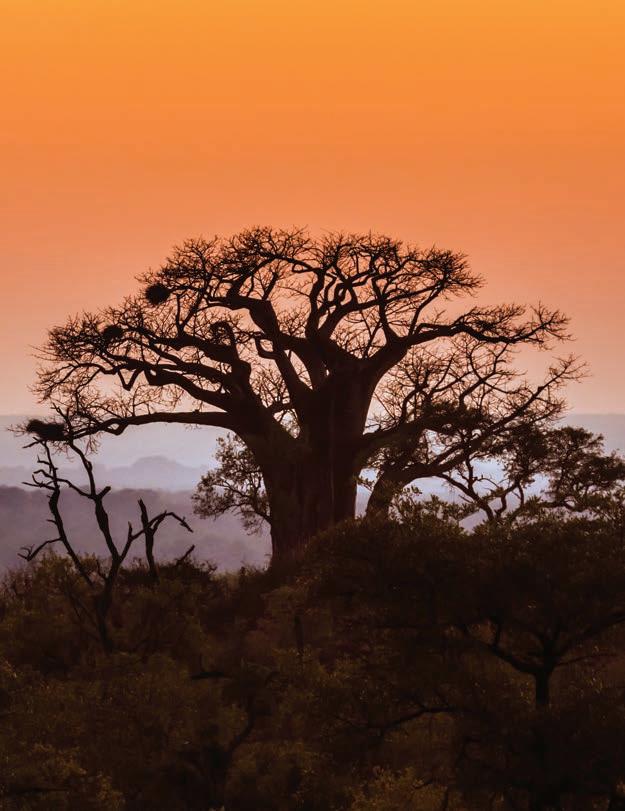
The ultimate family-friendly retreat just 90 minutes from Johannesburg, perfect for the school holidays.
f you’re a parent who has ever dreamt of a holiday that doesn’t involve you crying quietly in the hotel bathroom while your children attempt to disassemble the furniture, there is hope for you: Shangri-La Country Hotel and Spa in Limpopo is your salvation. Tucked just 1.5 hours away from Johannesburg, it’s close enough to save you from packing 17 juice boxes and hiring a sherpa for the journey, yet far enough to convince your offspring they are escaping their usual chaos back at home, only to cause it in a different province.
The name Shangri-La is derived from a mythical Himalayan paradise, believed to be a hidden utopia of eternal youth and serenity. This is certainly ambitious branding for a family resort in South Africa that regularly witnesses toddlers experiencing meltdowns by the koi pond before breakfast or teenagers glued to their devices. But let me tell you, somehow, they pull it off.
Upon arrival, you are greeted with that glorious mix of fresh Limpopo air and the mouth-watering scent of three types of meat being roasted over an open fire – a sure sign a father is already on holiday-mode braai duty. The setting is textbook picturesque: think winding garden paths, manicured lawns, towering trees and staff members who smile as if they haven’t just seen five kids pile out of a double-cab bakkie like it’s a clown car.
Shangri-La doesn’t ever try to be pretentious. It’s more “rustic charm meets comfort” than “look, yet another Instagrammable golden statue.” And thank goodness for that. You’re here to unwind and not worry that your children might smear peanut butter on something imported from Europe.
The rooms at Shangri-La are an eclectic mix of standard rooms, family units, and garden cottages, each with its own personality, very much like your children, but with just a bit less screaming. Most are decorated in warm, earthy tones with a dash of oldworld charm and a firm commitment to wooden furniture that feels both solid and surprisingly child-proof.
You will find the family units particularly practical, with enough space to ensure no one has to fetch the emergency blow-up mattress from the Venter trailer. Bonus points for the verandas, where mothers can sip a glass or two of bubbly at sunset while watching the kids pretend the garden is the setting for an intense game of touch rugby.
And yes, there’s WiFi, but it’s the
kind that politely suggests you stop scrolling and go outside. Which is kind of the point, right? Why else are you here?
Shangri-La seems to have been designed by someone who either has kids or has spent time around them and thought: “These tiny humans need to burn a lot of energy, all the time!”
The swimming pool is a popular hang-out spot and not just because it gives parents a chance to sit down for five consecutive minutes. There’s also a tennis court, a mini-golf course, and even a chess set the size of a medium dog. It’s okay if your children attempt to ride the knight.
Originally, the labyrinth at the back of the main building was meant for holistic courses, but during school holidays it gives parents some respite as kids sometimes fail to make their way out.
Whether you want to keep busy or slow down, additional activities such as volleyball, stargazing at the amphitheatre, seeking peace in the zen garden, or birdwatching, you have options.
Parents can sneak off to the spa for a massage because nothing says holiday like being kneaded into a semiconscious bliss while your partner supervises a water-balloon battle.

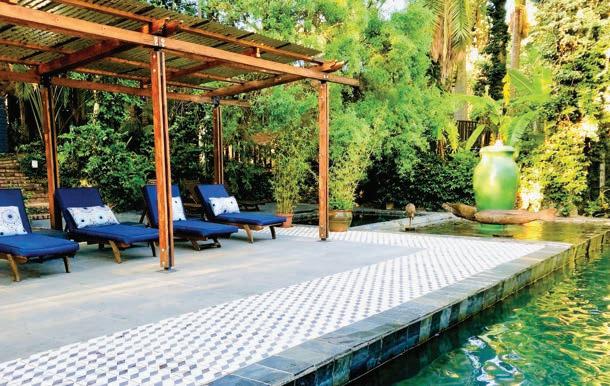
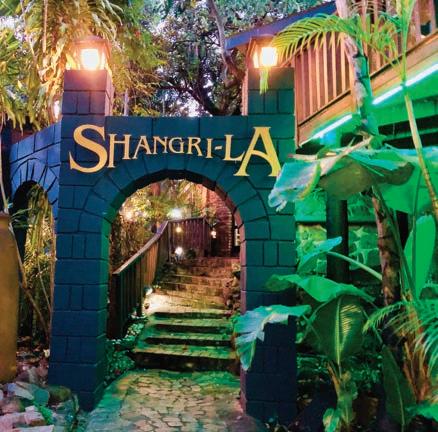
PREVIOUS PAGE: the Limpopo province offers the Big Five, making it even more appealing for visitors. THIS PAGE, CLOCKWISE FROM ABOVE: The pool area is one of the most popular parts of the hotel, and is known for staredowns between tired parents and kids who cannot get enough of the water; iniviting rooms mean family members can enjoy some alone time as often as they need; a mythical paradise welcomes you at the family-friendly Shangri-La..
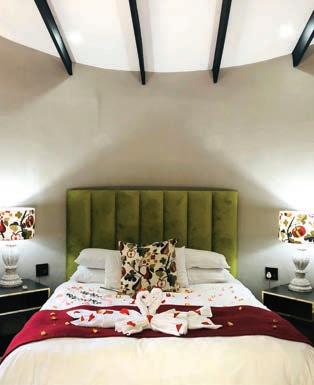
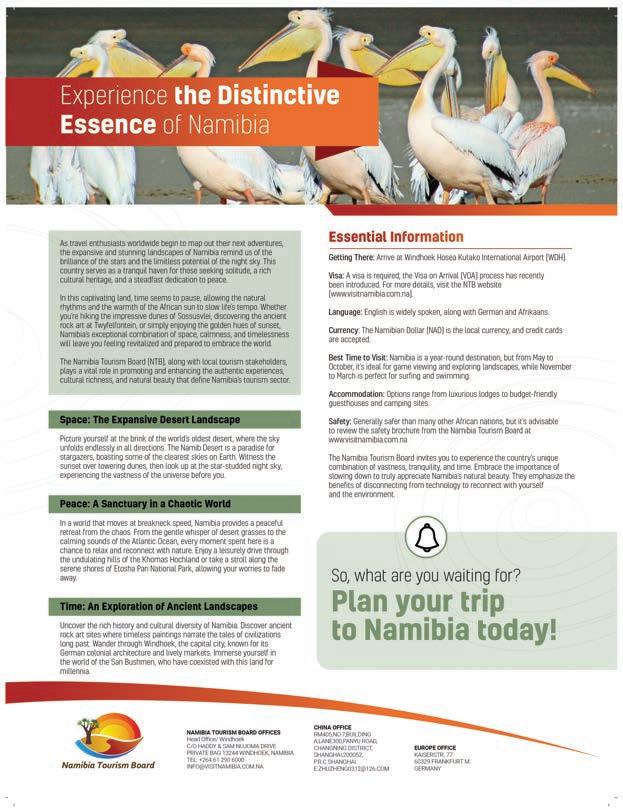
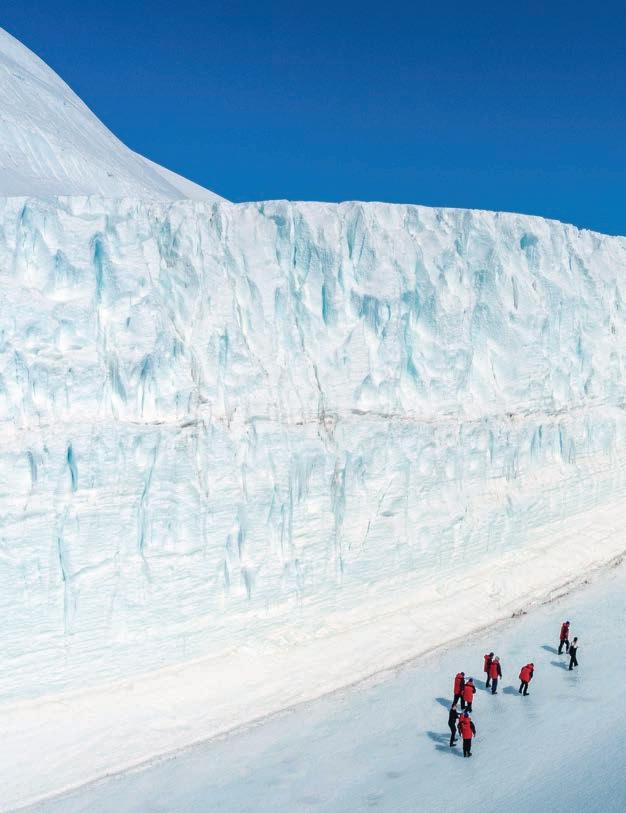
Keen for an adventure? Fly to Cape Town and, from there, board a scheduled logistics flight on an expedition alongside scientists and researchers to Deep Field Antarctica.
is the wide-eyed double-take I usually get when I tell people I recently visited Antarctica.
The seventh continent is the stuff of legendary wanderlust. A place very few travellers will ever experience, and when you do, it is every bit as otherworldly as conjured by the pioneering tales of polar explorers Amundsen or Shackleton.
What’s even more unbelievable is how accessible it is to get there these days, flying directly from Cape Town in under six hours into the heart of this icy wilderness, better known as Deep Field Antarctica.
Whether you brave the Drake Passage by polar cruise or fly the approximate 4,200 kilometres across the Southern Ocean with Ultima Antarctic Expeditions alongside scientists and researchers, as I did, this experience defies description.
Antarctica has no native human population, it’s not owned by any one country, and there is very little that can survive its brutal conditions, especially in winter with its -60 degree Celcius temperatures.
Yet, even as the global geopolitical landscape heaves under threats of tariff and disinformation wars, the 65+ research stations in Antarctica have for decades represented peaceful cooperation dedicated to humanity’s greater good. As a destination it might be hard to put into words. You are surrounded by an endless expanse of shimmering white, fractured only by rocky peaks (also called nunataks) here and there. It’s a sight that makes you feel like you’ve swallowed a thesaurus but are only able to blurt out a string of mind-blown emojis.
Yet it leaves you with incredible big picture clarity. Antarctica gifts you with an arresting sense of fragility and awe for this remarkable planet we call home.
Ultima Antarctic Expeditions is backed by its sister company, Ultima Antarctic Logistics, which has been supporting research programmes in Antarctica for over 20 years. The same air bridge that transports scientists now carries curious, consciously-minded travellers of any age or fitness level.
But that’s not by chance.
“It is such a privilege for us to welcome our guests to Deep Field Antarctica,” Riaan Aucamp, CEO of Ultima Antarctic Expeditions, told me. “We don't have dedicated tourist flights. Instead, we have a small number of seats reserved for expedition travellers as part of our regular service for many countries’ national Antarctic programmes.”
Fewer than 200 guests have a limited window each season during the Antarctic summer between November and February to join these expeditions.
Aviation geeks will also love the absolute authenticity of the Ilyushin-76 workhorse used to carry both passengers and cargo supplies to Antarctica. It seeds the foundation that the expedition you’re about to take is beyond the ordinary.
Touching down on the shimmering blue ice runway at the Ultima Airbase feels like landing on another planet. A seasoned polar expedition crew meets you and swiftly whisks you to their Oasis Camp. Oasis is literally like a warm hug, with its soft lighting, quiet efficiency, and cinematic charm, evident in the surrounding location of the Schirmacher Oasis, hence the name.
With its plush interiors and curated, modern elegance, there’s a hint of Wes Anderson’s The Grand Budapest Hotel about it. A small team of multi-talented staff moves effortlessly between roles: Fine-dining chefs, trained sommeliers (yes, WSET Level 3 qualified), cleaning crew, and polar expedition support.
Need a Bordeaux with your lunch? They’ve got you covered. Curious about the Antarctic Treaty? Just ask your expedition guide, who also happens to be a polar law expert.
With two modern, polar luxury cabins able to accommodate up to 14 guests and configurable for solo travellers, couples or families, this level of comfort in such an inhospitable place is surreal.
And yet, nothing about it feels excessive. Oasis Camp runs under strict IAATO guidelines, with responsible cooperation and the lightest footprint in mind.
From strict biosecurity protocols (even the loos are biosecure, and human waste is flown out each season) to
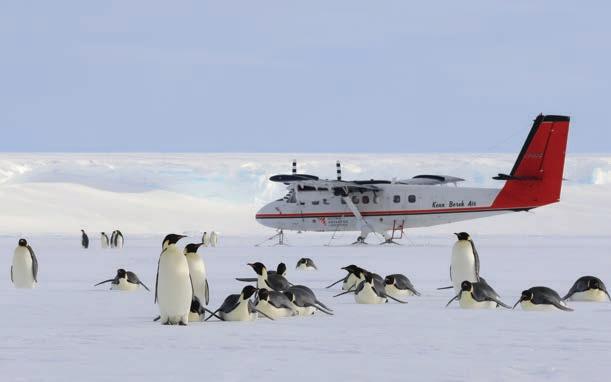
PREVIOUS PAGE: Excursions are carefully planned and led by expert guides; wild Emperor Penguins are only found in Antarctica. THIS PAGE, CLOCKWISE FROM ABOVE: Deep Field offers rare access to Emperor Penguin colonies in their natural, untouched habitat; standing in the bends of an ice tunnel feels like stepping into another world; despite being in this remote location, Ultima offers guests an extraordinary immersion into Antarctica, with unexpected luxury delights.


the conversations you’ll have with scientists, pilots, medical support staff and expert guides, there’s a deeper appreciation for what’s at stake here: The planet and climate impact. In a nutshell, the future.
Excursions are carefully planned and always led by their expert guides. One day, you’re hiking across a glassy, frozen lake with crampons. Next, you’re walking alongside a towering Ice Wall, and needing to keep a safe distance as “carvings” can lead to “gargoyle” chunks of ice crashing down without warning. Safety is paramount – as much as the wonder.
Then there are the quieter moments.
Standing in the bends of an ice tunnel, watching light swirl from pale white to electric blue, it's easy to feel small. Not insignificant – just reminded of the sheer force of nature.
What makes this experience remarkable isn’t the luxury of your stay – it’s how seamlessly it coexists in this extreme environment. In a world where travel and conservation often seem at odds, Ultima Antarctic Expeditions wants to change how we think about polar travel.
They have taken on the admirable task of showing responsible leisure travel to what they describe as the “Real Antarctica” is possible.
“Our flights carry scientists, staff and critically important equipment and supplies for this vital work being completed in the world’s most remote continent. As our guest, you are indirectly helping to cross-fund science in Antarctica,” added Aucamp,
And how is this expedition different from a polar cruise? For one, it’s far more exclusive. While an estimated 120 000 travellers cruise to the Antarctic Peninsula each year, Ultima hosts fewer than 200 guests per season, with only eight per expedition.
Their expeditions include a limited four-day trip with an IAATO-approved excursion to visit an Emperor Penguin colony and a seemingly decadent Ultimate Day in Antarctica (aboard a flight already scheduled for the continent).
Given its remoteness, it all comes with a considerable price tag, starting from US$12,000 up to US$85,000 for the grand tour of Antarctica with an overnight expedition to visit the Geographic South Pole.
“This is more than a destination; it's a testament to our planet's wild beauty and resilience.You’re not just going on an adventure.You are joining a legacy,” says Aucamp.
From the narrow seat of a Twin Otter aircraft adapted to land on the ice shelf, I grasped a sense of what that meant. The icy world below looked impossibly vast as we made the two-hour journey from the Ultima Air Base towards a rarely visited Emperor Penguin colony.
Somewhere between the roar of the engines and the glistening reflection of the deep blue ocean against the pristine white ice shelf, I felt an overwhelming ache for the beauty in front of me.
If this frozen frontier has taught me anything, it’s that Earth’s legacy is not just precious, it’s worth absolutely everything.
Direct purpose-driven flights from Cape Town to Antarctica in 5.5 hours, weather-dependent. No visa needed, but all country-specific visa requirements to South Africa apply.
2025-2026 Season runs between October to February: All-inclusive 8-day, 4-day or 36-hours, depending on the chosen expedition. Visit www.ultima-antarcticexpeditions.com.
Antarctica is accessible for all levels of fitness. Ultima is the ideal Multi-Gen experience for hosting guests from their early teens to octogenarians.
Oasis Camp accommodates up to 14 guests in warm, polar luxury cabins. No camping required.
Ultima provides all polar gear and equipment, so there is no need to buy anything.
Fewer than 200 guests per season and only eight per expedition.
All operations follow IAATO guidelines, with full biosecurity for the lightest environmental footprint.

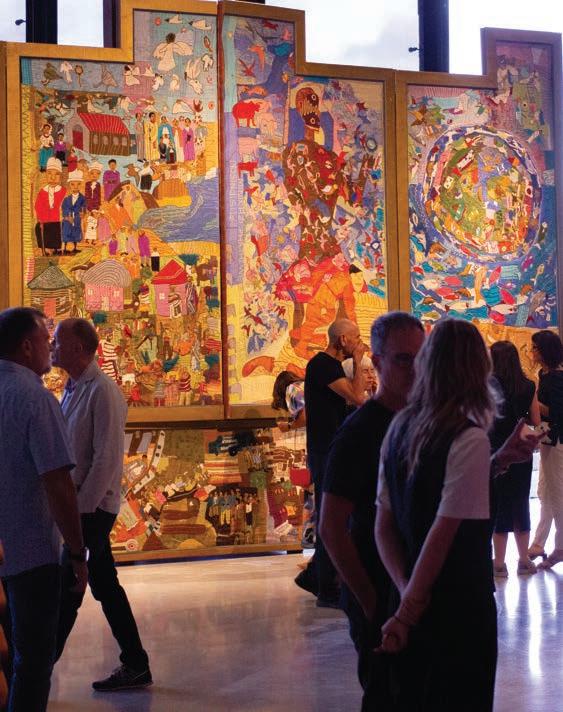
The Norval Foundation, an art museum and sculpture garden in Cape Town dedicated to exhibiting African art, invites visitors to embark on an immersive journey through its worldclass exhibitions with exclusive guided tours. These tours provide an exploration of the current exhibitions across nine galleries, offering guests a unique opportunity to engage with knowledgeable guides.
Norval Foundation offers guided tours fostering meaningful conversations around cultural narratives
Nestled in the scenic Tokai area, Norval Foundation is home to a remarkable collection of modern and contemporary art. The guided tours, available for individuals, groups, and school visits, offer an enriched experience by delving deeper into the exhibitions on display.
“Our tours are designed to deepen
the appreciation for the exhibitions on show, while fostering meaningful conversations around cultural narratives.
Whether you’re an art aficionado or a curious explorer, these guided experiences offer something truly special.” says Tayla Hollamby, Curator and Exhibition Manager at Norval Foundation.
In addition to the exhibitions, guests can explore the sculpture garden, a tranquil space featuring largescale installations by prominent artists, seamlessly blending art with nature.
Please bring along earphones to listen to our audio-guided tour. The foundation also boasts a library, the Secret Art Club Café, and Grub & Vine Norval restaurant, where visitors can enjoy gourmet dining with picturesque views. Tours are available from Wednesday to Sunday and can be fully customised to enhance the visitor experience.
For more information, or to schedule a tour, contact info@ norvalfoundation.org.
GET IN TOUCH
T: +27 87 654 5900
W: norvalfoundation.org
A: 4 Steenberg Road, Tokai, Cape Town

Each grape variety offers its own unique flavour profile, and some may suit your taste preferences better than others. For example:
• Pinotage: Bold, earthy, and a bit smokey, perfect for those who enjoy a strong character.
• Chardonnay: Whether it’s crisp and fruity or rich and buttery, the style can vary widely based on the winemaking process.
Don’t be afraid to explore wines outside of the usual choices. For instance, Alvi’s Drift Reserve Viognier is a beautiful expression of this grape, showcasing its elegance and complexity.
Where a wine comes from is just as important as what it’s made from. Different regions influence a wine’s flavour based on the soil, climate, and geography. For example:
Calitzdorp: Known for its port-style wines, rich and warming, they’re ideal for the cooler evenings of the festive season.
Worcester: Famous for its Chardonnay and Chenin Blanc, producing crisp, high-quality whites that are perfect for celebrating with loved ones.
Understanding the region can help you appreciate the wine’s unique characteristics and make a more informed choice.
A well-balanced wine is like a symphony for your senses, each element working in harmony. When tasting, look for:
Aromas: The scent should be rich and true to the grape, without any offputting notes.
Flavour: The taste should be harmonious, with no one flavour overpowering another.
Finish: A great wine leaves a lingering aftertaste that invites you back for another sip.
Balance is one of the hallmarks of quality, and it’s what separates a great wine from a good one.
Complex wines are those that evolve on your palate, revealing layers of flavour as you sip. A complex wine might start with fruity notes and then reveal hints of spice, earthiness, or even floral undertones. One great example is Alvi’s Drift Reserve Drift Fusion, which showcases rich black fruit aromas like black cherry and currant, followed by spice and cedar. Its wellrounded acidity and silky tannins make it a fantastic choice for both now and the years ahead.
A good wine should have a clear, distinct aroma. Trust your nose. Each varietal should express itself through its scent. A Sauvignon Blanc might offer grassy notes, while a Merlot will smell fruity and inviting. If the aroma is faint or muddled, the wine may not be of the highest quality.
Though rare, wine can develop faults. Some common issues to be aware of include:
Cork taint: This will give the wine a musty, unpleasant smell, often described as ‘wet cardboard’.
Oxidation: When wine is exposed to air too long, it can lose its freshness and taste flat or overly acidic. If the wine
smells or tastes off, it’s best to pass on it. Quality wine should be fresh, vibrant, and true to its varietal.
Not all wines are meant to age. Generally, wines with fuller body, good colour, and oak influence tend to improve over time. Reds like Cabernet Sauvignon and Syrah can age beautifully, while many whites, such as Sauvignon Blanc, are best enjoyed young for their crispness. When shopping, ask the retailer about a wine’s aging potential to ensure you’re choosing one that suits your needs.
You don’t need to spend a fortune to enjoy a great bottle. Price doesn’t always correlate with quality. There are plenty of affordable wines out there that deliver fantastic flavour. Don’t get caught up in trends or expensive labels. Focus on what pleases your palate, and explore different regions, grape varieties, and wineries to find hidden gems.
If you’re ever unsure, don’t hesitate to turn to the experts. Look for wines that have received prestigious awards, such as the Michelangelo International Wine Awards or Tim Atkin’s Wine Report. These accolades are a great indicator that the wine has been rigorously tested for quality, ensuring you’re picking a bottle that’s been crafted with care and attention.



Every year, 75 youth get a foot in the door of the aviation industry by enrolling in SAA Technical’s accredited three-year training programme.

SAA Technical (SAAT) is an approved Maintenance and Repair Organisation (MRO) responsible for aircraft maintenance services for the SAA aircraft fleet. As a State-Owned Company, SAAT recruits 75 youth annually as part of its contribution to the National Skills Development Agenda. This initiative aligns with government’s efforts to address rare and critical aviation skills shortages within the country.
The selected learners are enrolled in a three-year training programme, accredited by the Department of Higher Education, specialising in nine aircraft trade disciplines offered by SAAT Basic Training. Recruitment for these programmes is conducted through the SAA career webpage and corporate social investment initiatives. The training programme is internationally recognised for its high-quality standards, attracting the attention of leading airline operators and MROs. Upon completion, graduates are equipped with highly sought-after skills, which present opportunities in various global markets, including Australia, New Zealand, and the Middle East.
Notably, four of SAAT’s six executive team members are former beneficiaries of this initiative, having started their careers at SAAT as apprentices. This underscores the organisation’s dedication to investing in youth development to ensure longterm industry sustainability and national economic growth.
Our annual learnership intake normally takes place during February.Visit flysaa.com/technical for more information.
Recognising the limited awareness of aviation career opportunities among school leavers, SAAT actively engages in outreach initiatives to inspire young talent. A key component of

this strategy is the SiVulindlela simulator, a mobile unit designed to introduce aviation to communities, particularly in rural areas. This simulator serves as a high-impact educational tool, capturing the interest of aspiring aviation professionals.
In celebration of International Civil Aviation Day (ICAD) 2024, SAAT recently participated in the annual Aviation Career Expo and Airshow, which took place in December at Upington Airport in the Northern Cape.
One of the highlights of this expo was our iconic SiVulindlela mobile aircraft simulator, which has for many years been used to introduce learners to the aviation industry at large.
The unit comprises a container that has been designed to resemble the inside of a Boeing Next-Generation 737 aeroplane, complete with a flight deck, passenger seats, overhead bins and a demonstration engine.
Learners were introduced to the many fascinating and fulfilling careers available in the aviation sector as a whole, and specifically the various skills in the aviation maintenance arena. Around 1 000 learners attended the two-day career expo, allowing our team an opportunity to share their passion for aviation with a new generation.
As a demonstration of our commitment, SAAT CEO Wellington Nyuswa was present at this event. He also participated in strategic discussions with key role players at the event, including the Department of Transport, Department of Trade and Industry, Transport Education and Training Authority, South African Civil Aviation Authority, South African Air Force, Air Traffic Navigation Services, Airports Company South Africa,


To increase awareness of aviation career opportunities among school leavers, SAA Technical (SAAT) regularly hosts outreach initiatives to inspire young talent. Most recently, SAAT participated in a career awareness event that was hosted by uMzimkhulu schools in KwaZulu-Natal. SAAT deployed the SiVulindlela simulator, a mobile unit designed to introduce aviation to communities, accompanied by a dedicated support team. The showcase attracted significant attention, allowing learners to explore technical trade offerings and broader aviation career pathways.
and South African Weather Service.
On 22 March 2025, SAAT participated in a career awareness event that was hosted by uMzimkhulu schools in KwaZuluNatal. The event took place in a peri-urban area approximately 5 kilometres outside the uMzimkhulu Central Business District. The invitation was extended by the Dutch Reformed Church School and Clydesdale Senior Secondary School, seeking to expose learners to various career opportunities within the aviation sector.
SAAT deployed the SiVulindlela simulator, accompanied by a dedicated support team. The showcase attracted significant attention, allowing learners to explore technical trade offerings and broader aviation career pathways. Mathematics and physical science students received targeted engagement, aligning their academic subjects with potential aviation careers.
The event drew approximately 4 500 learners from multiple high schools in the region. A structured approach was implemented to ensure organised access to the simulator, allowing students to gain first-hand experience of aviation technology. The initiative was led by the Training and Development Department, supported by specialised instructors and a newly qualified technician.
At the event, SAAT’s management reinforced its dedication to talent development, emphasising the importance of informed career choices and encouraging youth participation at the exhibition stands. This engagement served to inspire and guide potential future aviation professionals.



The success of this initiative underscores SAAT’s ongoing commitment to skills development and industry growth. The positive reception of the SiVulindlela simulator highlights its effectiveness in generating interest among youth, particularly in underrepresented areas. SAAT remains dedicated to maintaining strong relationships with educational institutions and aims to cultivate the next generation of aviation professionals from the uMzimkhulu region and beyond.
SiVulindlela means “we are opening the way” in isiXhosa. This remarkable project was developed in collaboration with Boeing and continues to open the way for our youth and future aviators. Through this initiative, we continue to ignite a passion for aviation and to open doors to career possibilities that many learners had never previously considered.
After 45 years on the job, SAA Cargo Manager for the Benelux countries (Belgium, the Netherlands and Luxembourg), FRITS DEBOIS, has many tales to tell.
Frits Debois started working at South African Airways in 1980 at Amsterdam Schiphol International Airport (AMS) in the passenger section. Moving freight had not really been developed on SAA’s passenger aircraft flights out of Schiphol. Back then, freight inquiries were scarcely received and regarded as trouble, rather than moneymakers.

However, that same year, SAA bought 747-Combi aircrafts, splitting the aircraft into passenger and cargo sections, and eventually the aircraft was introduced on the AmsterdamJohannesburg-route. Suddenly, the Amsterdam SAA office was confronted with massive and persistent freight forwarding inquiries to South Africa. Having passenger staff manage this as a sideline became unsustainable, leading to the need for dedicated staff for the cargo business.
Enter Frits and his colleague Lionel Hart, who were both presented with the opportunity to take over and start a separate cargo office at AMS in 1994. When the 747, 707, and DC10 freighter aircrafts also started to operate via Amsterdam in 1996, Kathleen Pooters was welcomed as the third full SAA Cargo staff member at AMS. After almost 31 years, Kathleen left in 2021 and Lionel went on retirement, and was replaced by Monique Krijgsman.
Their duty history sounds quite adventurous, having to adapt to an ever-changing set-up. From having to start from scratch without any cargo background and filling half of the then once weekly Combi-aircraft between Amsterdam and Johannesburg, to being completely responsible for the turnaround of SAA Cargo’s own freighter rotations four to five times a week out of Amsterdam only a year and a half later, including flight planning, fuel calculations, corresponding with aviation authorities on traffic rights, and even meeting pilots at their 4am flight arrivals.
In 2000, SAA Cargo’s freighters were sold to MK Airlines. This marked another milestone of change in the history of SAA Cargo for the Benelux countries, as they transformed their operation from working with own freighter flights into purchasing and selling freighter capacity on other freighter
carriers. This purchase of capacity business model remains in practice for our Amsterdam Cargo operation. Choosing between the carriers depends on available schedules, service quality received, and blocked space prices offered - and Frits and his team are always doing their best to make sure that all requirements are being met alongside achieving a profitable turnaround for SAA Cargo.
There has been a short flicker of revival of having our own freighter aircraft going via our AMS Cargo-HUB in between. This freighter operation was given a worldwide schedule, with an initial European contribution of an AMS-JFK route as of May 2006 and a subsequent change into a direct AMS-JNB route in June 2007. However, the worldwide operation turned out not to be viable for South African Cargo as a whole, and the lease was terminated in May 2009.
2007 also saw the closure of the Passenger Office in Amsterdam due to route changes within the European Network. While this was a sad occasion, we are proud of the fact that the profitability of our businesses justified continuing with our operation on the cargo side and we were able to retain our SAA Cargo colleagues at AMS until 2021.
The chronicle of the AMS Cargo office portfolio also includes a bundle of amusing stories. For instance, we had to donate 10 pelicans to a local zoo because the consignee of these birds refused to accept having to send them into quarantine at London airport. Sending the animals back to South Africa was not an option; the pelicans would not twice survive the trip of travelling and quarantine. Frits and his team had to find a suitable home for them. They found a zoo that happily accepted the birds as a donation, while in turn they agreed to take over all quarantine duties and costs. The zoo was so cheered about their fortune of acquiring these pelicans almost for free that they made a sign stating that the birds were donated by South African Airways.
Unfortunately, the day after the pelicans were released to the zoo, an article appeared in the newspaper stating that “10 birds had escaped the park” and flew out of the premises. We do hope they eventually made their own way home.
SAA offers in-flight entertainment on all domestic and regional flights on overhead screens. The A340 and A330 aircraft are equipped with personal TV screens and offer an audio-video-on-demand entertainment selection. Please refer to the content on your personal screen for the latest updated entertainment choices.

COMPANION • English; Portuguese; French; Spanish
A billionaire's death sets off a chain of events for Iris and her friends during a weekend trip to his lakeside estate. THE LORD OF THE RINGS: THE WAR OF THE ROHIRRIM • English; Portuguese; French; Spanish Set 183 years before the events chronicled in the original trilogy of films, The Lord of the Rings:The War of the Rohirrim tells the fate of the House of Helm Hammerhand, the legendary King of Rohan.
SWEETHEARTS • English; Portuguese; French; Spanish From director Jordan Weiss, this hilarious and relatable buddy comedy follows college freshmen Ben and Jamie as they struggle through their first semester while still tethered to their longdistance high school sweethearts.
SALEM'S LOT • English; Portuguese; French; Spanish An author returns to his hometown of Jerusalem's Lot in search of inspiration for his next book, only to discover that the townspeople are being attacked by a bloodthirsty vampire.
JUROR #2 • English; Portuguese; French; Spanish From legendary filmmaker
Clint Eastwood comes Juror #2 which follows family man Justin Kemp who, while serving as a juror in a high profile murder trial, finds himself struggling with a serious moral dilemma... one he could use to sway the jury verdict and potentially convict – or free – the accused killer.
CADDO LAKE • English; Portuguese; French; Spanish When an 8-year-old girl disappears on Caddo Lake, a series of past deaths and disappearances begin to link together, altering a broken family’s history.
BEETLEJUICE
BEETLEJUICE • English; Portuguese; French; Spanish After a family tragedy, three generations of the Deetz family return home to Winter River. Still haunted by Beetlejuice, Lydia’s life is turned upside down when her teenage daughter, Astrid, accidentally opens the portal to the Afterlife.
TRAP • English; Portuguese; French; Spanish A father and teen daughter attend a pop concert, where they realise they’re at the centre of a dark and sinister event.
SUPER/MAN: THE CHRISTOPHER REEVE
STORY • English Neverbefore-seen home movies and personal archives recount the tragic and redemptive story of actor and activist Christopher Reeve.
JOKER: FOLIE À DEUX •
English; Portuguese; French; Spanish Arthur Fleck is institutionalised at Arkham, awaiting trial for his crimes as Joker.While struggling with his dual identity, Arthur not only stumbles upon true love, but also finds the music that’s always been inside him.
HEAD FULL OF HONEY • English; French A man
suffering from Alzheimer's embarks on a final road trip with his granddaughter.
THIS IS WHERE I LEAVE YOU • English; Portuguese When their father passes away, four grown siblings are forced to return to their childhood home and live under the same roof together for a week, along with their over-sharing mother and an assortment of spouses, exes and might-have-beens.

BOSSES • English; Portuguese; French; Spanish With the benefit of a few too many drinks and some dubious advice from a hustling ex-con, the three friends devise a convoluted and seemingly foolproof plan to rid themselves of their respective employers...permanently.
HORRIBLE BOSSES 2 • English; Portuguese; French; Spanish Fed up with answering to higher-ups, Nick, Dale and Kurt decide to become their own bosses by launching their own business. But a slick investor soon pulls the rug out from under them.
INVICTUS • English; Portuguese; French; Spanish Nelson Mandela, in his first term as the South African President, initiates a unique venture to unite the apartheid-torn land: enlist the national rugby team on a mission to win the 1995 Rugby World Cup.
JUPITER ASCENDING
• English; Portuguese; French; Spanish A young woman discovers her destiny as an heiress of intergalactic nobility and must fight to protect the inhabitants of Earth from an ancient and destructive industry.
TOMB RAIDER • English; Portuguese; French; Spanish Lara Croft, the fiercely independent daughter of a missing adventurer, must push herself beyond her limits when she finds herself on the island where her father disappeared.
POINT BREAK (2015)
• English; Portuguese; French; Spanish A young FBI agent infiltrates an extraordinary team of extreme sports athletes he suspects of masterminding a string of unprecedented, sophisticated corporate heists.
BEETLEJUICE • English; Portuguese; French; Spanish When a couple of nice, young homebody ghosts try to haunt the pretentious humans who have moved into their house, they ask for help from a demonic wraith they cannot control in this comic fantasy that mixes the quick and the dead with a laugh and a fright.
THE SUN IS ALSO A STAR
• English; Portuguese; French; Spanish A teenager finds love at a difficult time in her family’s life.
WINTER'S TALE • English; Portuguese; French; Spanish A burglar falls for an heiress as she dies in his arms.When he learns that he has the gift of reincarnation, he sets out to save her.
A STAR IS BORN • English; Portuguese; French; Spanish A musician helps a young singer find fame as age and alcoholism send his own career into a downward spiral.
THE DARK KNIGHT • English; Portuguese; French; Spanish When the menace known as the Joker emerges from his mysterious past, he wreaks havoc and chaos on the people
of Gotham, the Dark Knight must accept one of the greatest psychological and physical tests of his ability to ght injustice.

X KONG: THE NEW EMPIRE
• English; Portuguese; French; Spanish Godzilla and the Kong face a colossal threat hidden within our world, challenging their very existence - and our own.
WONKA • English; Portuguese; French; Spanish Wonka tells the wondrous story of how the world's greatest inventor, magician and chocolate-maker became the beloved Willy Wonka we know today.
LET THEM ALL TALK
• English; Portuguese; French; Spanish A famous author goes on a cruise trip with her friends and nephew in an e ort to nd fun and happiness while she comes to terms with her troubled past.
KIMI • English; Portuguese; French; Spanish An agoraphobic tech worker discovers a recording of a violent crime and tries to report it to her superiors.
TENET • English; Portuguese; French; Spanish Armed with only one word – Tenet – and ghting for the survival of the entire world, the protagonist journeys through a twilight world of international espionage on a mission that will unfold in something beyond real time.
BLACK ADAM • English; Portuguese; French; Spanish In
ancient Kahndaq, the slave Teth Adam was gifted the almighty powers of the gods. But he used those powers for vengeance and was imprisoned. Now, 5,000 years later, he is freed and once again wields his dark sense of justice onto the world.
THE GOOD LIAR • English; Portuguese; French; Spanish
be a cut-and-dry swindle into the most treacherous tightrope walk of his life.
JUDAS AND THE BLACK MESSIAH • English; Portuguese; French; Spanish O ered a plea deal by the FBI, William O’Neal in ltrates the Illinois chapter of the Black Panther Party to gather
Entertaining you and your family with a wide selection of movies, TV programmes, games, and music, streamed directly to your own mobile device or tablet. USB and PC powerports are available below your seat to keep your devices charged. Now available on select A320 aircraft. Simply scan the QR code below to enjoy entertainment above the clouds.
Stream movies and more to your device
you’re a Ken. DUNE • English; Portuguese; French; Spanish A mythic and emotionally charged hero’s journey, Dune tells the story of Paul Atreides, a brilliant and gifted young man born into a great destiny beyond his understanding, who must travel to the most dangerous planet in the universe to ensure the future of his family and his people.
THE FLASH • English; Portuguese; French; Spanish Barry Allen uses his super speed to change the past, but his attempt to save his family creates a world without super heroes, forcing him to race for his life in order to save the future.



Switch to airplane mode and turn on Wi-Fi
con artist Roy Courtnay can hardly believe his luck when he meets wellto-do widow Betty McLeish online. As Betty opens her home and life to him, Roy is surprised to nd himself caring about her, turning what should
• English; Portuguese; French; Spanish To live in Barbie Land is to be a perfect being in a perfect place. Unless you have a full-on existential crisis. Or
MUMMIES • English; Portuguese; French; Spanish
Three mummies end up in present-day London and embark on a journey in search of an old ring belonging to the Royal Family, stolen by the ambitious archaeologist Lord Carnaby.
DON'T WORRY DARLING
• English; Portuguese; French; Spanish While her husband leaves home every day to work in a top secret facility, a young 1950s housewife begins to question her life when she notices strange behaviour from the other wives in the neighborhood.
HOUSE PARTY • English; Portuguese; French; Spanish A high school student decides to host a house party while his parents are away. A remake of the 1990 comedy, House Party.
Voyager rewards you with 2 500 Enrolment Bonus Miles on registration after your rst activity.
Earn 1 mile for every R1.60 spent on base fare and carrierimposed fees.
Spend miles on any available seat on a SAA-operated ight for the base fare and carrierimposed fees.
>> Earn SAAVoyager miles at an accelerated rate when ying on SAA operated ights. Voyager members earn 1 mile for every R1.60 spent exclusively on South African Airways. Miles are also earned by ying with

our airline partners, including the Star Alliance global network, and by using the services of our non-airline partners, ranging from travel-related to lifestyle, retail and nancial services.
>> Spend your SAA Voyager Miles on global ights (more
than 30 airline partnerships, including the Star Alliance global network) or non-airline Awards, such as car rental, retail, and more.
>> If you do not have enough Miles for your desired Award, you can transfer Miles in denominations of 1000 miles for R120, or buy Miles for R100 (SAA ight Awards) and R250 (other airline Awards).
Voyager Miles can be earned and/or spent when using the following Voyager partners:








>> Awards available on SAA, other partner airlines and nonairline partners are listed below.
>> SAA Voyager members are guaranteed at least 5% return on your SAA spend when requesting an SAA exclusive Dynamic Award for an SAA-operated ight. You may spend your miles on any available airfare, inclusive of carrier-imposed fees for your desired SAA operating ight, thus con rming your redemption seat request immediately.
SAA Voyager members can spend miles on non-airline Awards including car rental, retail, and more.
You can spend your miles online; simply login to your account (go to voyager. ysaa. com and click on “My Voyager”) or contact our call centres. To use your miles for products on NetFlorist or Wine-ofthe-Month Club, log onto their respective websites and choose Voyager miles as a payment option. Your miles are valid for three years from the date they were earned, and you can nominate any person of your choice to utilise your Awards.
>> You can spend your miles on car rental or Uber SA.
>> You can spend your miles on any of the lifestyle partners listed on the left.
Book a ticket by miles, apply for a Voyager Credit Card, or find out more on voyager.flysaa.com

Star Alliance unveils its first lounge in Asia at Guangzhou Baiyun International Airport, China.
The lounge is available to First and Business class passengers, and Star Alliance Gold status customers on member airline ights departing from Terminal 1.

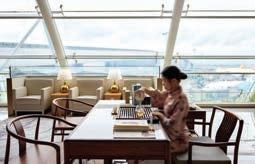
The new lounge is on the upper level of the existing GBIA lounge in the Terminal 1 international area, and is close to the departure gates for Star Alliance member airlines. The lounge features an open layout and can accommodate up to 100 guests. Open around the clock, it welcomes travellers with varying ight schedules.
“Lounges are a critical component for the e ortless travel experience we aim to provide to our member airline passengers,” said Star Alliance CEO Theo Panagiotoulias. “As a key strategic hub in Asia, Guangzhou serves as an important gateway for our guests. We are excited to inaugurate our rst lounge in Asia, given the signi cance of the continent to aviation growth today and in the years to come.”
Ambar Franco, Star Alliance’s Vice President for Customer Experience, added,“Our rst Star Alliance branded lounge in Asia is an exciting milestone for us.Thoughtfully designed with the modern traveller in mind, it o ers an e ortless blend of comfort and functionality. ”
The lounge includes practical amenities, such as workstations and comfortable seating areas for both relaxation and productivity. Tucked in a quiet space, the VIP room is ideal for group or private business meetings, available upon request. Guests are also welcome to use the state-of-the-art shower suites to refresh themselves before their onward journey. In addition, guests can enjoy the exclusive Tea Appreciation Corner, a range of food options, or specially curated drinks at the bar counter.
Qi Yaoming, Deputy General Manager of Guangzhou Baiyun International Airport, said,“The fact that Star Alliance has chosen to open its rst branded lounge in Asia at Guangzhou Baiyun International Airport is not only a sign of trust and support for us, but also an acknowledgment of the status of Baiyun Airport as an important international hub. Baiyun Airport will continue to uphold the service concept of ‘Customer First’ and continuously build itself into an airline-friendly airport to provide even better service guarantees for Star Alliance and its member airlines.”
>> For more information, visit staralliance.com

STEPS TO REDEEM MILES
Enrolling as a member of any Star Alliance member airline frequent- yer programme is your gateway to exceptional rewards and bene ts. By accumulating miles and points from all your ights across the network into a uni ed account, you gain the signi cant advantage of quicker redemption opportunities and exciting bene ts. Star Alliance o ers online redemption of miles and points for award ights and upgrade awards across the 25-member airline network, making it convenient and hassle-free for travellers. Redeeming miles and points is easy with three simple steps: LOG IN Go to your airline’s frequent-flyer programme website and log in. CHECK























Codeshare routes

















South African Airways
Schedule subject to change.
















Routes at time of going to press.
NOROUTEDEPARR M TWTFSS
Between Johannesburg and Accra
SA 052JNB - ACC 14:5519:00 x
SA 053ACC - JNB 20:3004:25 x
*SA 056JNB - ACC 10:5515:00 xxx
*SA 057ACC - JNB 20:1504:10 xxx
Between Accra and Abidjan
*SA 056ACC - ABJ 16:0017:00 xxx
*SA 057 ABJ - ACC 18:0019:05 xxx
Between Johannesburg and Abidjan
*SA 056JNB - ABJ 10:5517:00 xxx
*SA 057 ABJ - JNB 18:0004:10 xxx
Between Johannesburg and Cape Town
SA 303JNB - CPT 06:0508:20 xxxxx
SA 313JNB - CPT 08:1010:25 xxxxx
SA 317JNB - CPT 08:4010:55 xx
SA 323JNB - CPT 09:5512:10 xx
SA 327JNB - CPT 11:4013:55 xxxxxxx
SA 337JNB - CPT 13:0015:15 xx
SA 343JNB - CPT 14:3016:45 xxxxx
SA 355JNB - CPT 16:4018:55 xxxxxxx
SA 359 JNB - CPT 17:3019:45 xxxxxxx
SA 363JNB - CPT 18:3020:45 xxxxxx
**SA 375JNB - CPT 21:2023:35 xxxxxxx
SA 302CPT - JNB 06:0008:00 xxxxx
SA 304CPT - JNB 06:4008:40 xxxxxx
SA 308CPT - JNB 07:2509:25 xx
SA 314CPT - JNB 08:1010:10 xx
SA 316CPT - JNB 09:0011:00 xxxxx
SA 326 CPT - JNB 11:0513:05 xxxxx
SA 334CPT - JNB 12:5014:50 xx
SA 342CPT - JNB 14:1516:15 xxxxxxx
SA 352 CPT - JNB 15:5517:55 xx
SA 354CPT - JNB 17:2519:25 xxxxx
SA 366CPT - JNB 19:3521:35 xxxxxxx
SA 372 CPT - JNB 20:2522:25 xxxxxxx Between Johannesburg and Durban
SA 527 JNB - DUR 06:3007:40





AIRBUS A320-200
• Number of aircraft: 11 • Maximum passengers: between 138 to 186 • Maximum fuel capacity: 23 860L • Typical cruising speed: 820km/h
BOEING B737-800 (DAMP LEASE)
• Number of aircraft: 4 • Maximum passengers: 175
• Maximum fuel capacity: 23 860L • Typical cruising speed: 820km/h






AIRBUS A330-300
• Number of aircraft: 2 • Maximum passengers: 249 • Maximum fuel capacity: 97 530L • Typical cruising speed: 871km/h
Everything you need to know to ensure your entry to South Africa is hassle-free
>> CUSTOMS DUTY
Customs duty is levied on imported goods and is usually calculated on the value of the goods.
>>
People may enter South Africa at any appointed place of entry. All the goods in their possession must be declared to a customs o cial at the port of entry. When dutiable goods are in their possession, the relevant duties and VAT must be paid.
>> GOODS THAT MAY BE IMPORTED WITHOUT THE PAYMENT OF CUSTOMS DUTY AND VAT
(A) Visitors: Personal e ects and sporting and recreational equipment, new or used, imported either as accompanied or unaccompanied baggage for their own use during their stay in South Africa.

AIRBUS A340-300E
• Number of aircraft: 2 • Maximum passengers: 253 • Maximum fuel capacity: 141 500L • Typical cruising speed: 860km/h
CUSTOMER SERVICE
Weekdays 08:00-16:30, excluding South African public holidays saacustomerservice@ flysaa.com
• +27 11 978 2888
RESERVATIONS 24 hours reservationsjnb@flysaa.com
• +27 11 978 1111
BAGGAGE SERVICE (lost/ damaged) Daily 07:00-19:00 baggageservices@flysaa.com
• +27 11 978 2888
REFUNDS Weekdays 08:0016:30, excluding South African public holidays. New refund
saasawubona.com
request: +27 11 978 1786
flysaa.com/refund-application
CARGO Weekdays 06:00-21:00, excluding South African public holidays, Saturdays and Sundays, 08:00-16:00 saacargoreservations@flysaa. com • +27 11 978 1119/3366
WEBSITE QUERIES
webhelp@flysaa.com
VOYAGER Weekdays 07:0021:00, Saturdays, Sundays and public holidays 08:00-14:00 voyagerservicerecovery@flysaa. com • +27 11 978 1234
(B) Residents: Personal e ects and sporting and recreational equipment, new or used, exported by residents of South Africa for their own use while abroad and subsequently re-imported either as accompanied or unaccompanied baggage.
(C) Limits in respect of certain goods: The following goods may be included in passengers’ baggage either by residents or non-residents, but not exceeding the following limits:
• Wine: 2 litres per person.
• Spirits and other alcoholic beverages: 1 litre per person.
• Cigarettes: 200 cigarettes per person.
• Cigars: 20 cigars per person.
• Cigarette or pipe tobacco: 250g per person.
• Perfume: 50ml per person.
• Eau de toilette: 250ml per person.
• Other new or used goods to a total value not exceeding R5 000 per person, excluding consumables. The limit for crew members is R700.
• Allowances may not be pooled or transferred to other persons.
PLEASE NOTE: Visitors may be required to pay a cash deposit to cover duties and tax on expensive articles such as video cameras. The deposit on the goods is refunded on departure from South Africa.
>>
• Children under 18 may claim duty-free allowances on goods used by them.
• Children under 18 may not claim allowances for tobacco and alcohol.
• Parents may make a customs declaration on behalf of their children.
Customs clearance procedures for passengers:
• Passengers may select either the red or green channel upon arrival in South Africa.
• By selecting the red channel, a passenger indicates that he/she has goods to declare.
• The customs officer in the red channel must ascer tain the value of the goods declared and the duties payable by the passenger’s duty-free allowances.
• By selecting the green channel, a passenger indicates that he/she has no goods to declare.
• Random searches of passengers and baggage in the g reen channel are conducted.
The following goods are prohibited from import: Vegetables, groundnuts, firewood, honey, used pneumatic tyres, raw animal wool and hair, electric blankets, coins, video recorders and reproducers, revolvers and pistols.
The following goods are prohibited from export unless special permits are obtained from the relevant government department: Human bodies or body parts; meat and edible portions from cattle, sheep, goats or pigs; meat and edible animal offal salted, in brine, dried or smoked; edible flours and meals of meat or offal; cane or beet sugar and chemicals; pure sucrose in solid form; raw hides and skins of bovine or equine animals (fresh or salted, dried, limed, pickled or otherwise preserved, but not tanned, parchmentdressed or further prepared), whether or not dehaired or split; bank notes, securities or foreign currency.
Apart from the requirements of the Export Control Regulations, the exportation and importation of a wide variety of goods is either totally prohibited or is subject to inspection by other authorities and/or production of special permits/licences, issued by certain authorities only. A
comprehensive list of prohibited and restricted imports and exports is available on the South African Revenue Service website (sars.gov.za).
PLEASE NOTE: Baggage is cleared at the first point of entry in South Africa. In case of connecting on a domestic flight, baggage must be collected, customs cleared and rechecked.
Help us make sure your baggage gets there with you
At SAA, our goal is to deliver your baggage to you at your destination safely and timeously. However, due to circumstances beyond our control, baggage may be delayed, lost or damaged. In that case, our representatives at all SAA destinations will do their best to retrieve it or compensate you and minimise any inconvenience to you. Kindly note the following guidelines:
• Unique identification: ensure your bag’s easy to recognise by tagging the outside with a colourful ribbon, and using a name tag with your correct name, address, telephone number, email address and destination address.
• The following items should NOT be packed in your check-in bags, but rather carried in your hand luggage: money, passports or visas, computer equipment, laptops, electronic devices, mobile phones, fragile items, business documents, keys, jewellery, lithium-ion batteries and e-cigarettes.
• Always ensure that your bags are locked prior to check-in, as this acts as a deterrent.
• Take advantage of the wrapping services provided at the airport as an additional preventative measure against damage and pilferage.
PLEASE NOTE: SAA does not take responsibility for the loss of valuable items in checked baggage, including money, passports or visas, computer equipment, electronic devices, mobile phones, fragile items, business documents, keys, and jewellery.
• Due to limited space in the overhead compartments, your hand luggage may be placed in the cargo hold.
• Remove all valuables, powerbanks, lithium-ion batteries and e-cigarettes from your hand luggage before it’s taken for stowage in the cargo hold.
• Ask for an airline tag with your name and flight details.
• For international travel, liquids, aerosols and gels measuring more than 100ml aren’t permitted in hand luggage. If they measure less than 100ml, they must be secured in a Ziploc bag.
>> BAGGAGE ALLOWANCE (ROUTE-SPECIFIC)
• Economy Class: One to two pieces at a maximum of 23kg each.
• Business Class: One to two pieces at a maximum of 32kg each.
• Infants not entitled to a seat shall only be permitted one piece of luggage up to 23kg and one collapsible pram, car seat or collapsible buggy.
Report your mishandled baggage to the Baggage Services office at the airport.
• A file will be created for tracing purposes.
• Your personal and travel information will be key.
If your baggage has been lost, report the incident immediately or within seven calendar days to the office of SAA’s Baggage Services, where you’ll receive a unique reporting number. We’ll initiate the tracing of the baggage and will continue for up to 120 hours, although most misdirected baggage is located sooner. You’ll be informed as soon as your baggage is traced and (where local customs regulations permit), it will be delivered to the address you have provided.
During the tracing period, you may contact our office for information on progress made at the telephone number below or via WorldTracer, a computerised tracking system that can be found at flysaa.com under “Essential Information”.
If your baggage is damaged, we’ll carry out all repairs and replacements (where necessary) according to the Carrier’s Baggage Liability Limitations. This excludes normal wear and tear, and manufacturers’ defects. The incident must be reported immediately or within 7 (seven) days of receipt of the baggage for international travel and within 24 (twenty-four) hours for domestic travel to the office of SAA’s Baggage Services, where you’ll receive a unique reporting number.
The next step is to submit a completed claim form to the Passenger Claims office. The finalisation of claims takes up to 21 working days. Please complete the form as thoroughly as possible, and attach all required documentation, including proof of bank account, to expedite the process.
ENQUIRIES:
Customer Services: +27 11 978 2888 Baggage Enquiries: baggageservices@flysaa.com
In order to make your journey a pleasant one, please note the information on the following pages



• Time to relax! The backrest of your seat can be adjusted. For extra comfort during the flight, you may wish to lean back. Press the button in the armrest of your seat for the backrest to tilt slightly. Note that on the narrow-bodied aircraft, seats forward of the emergency exit rows have limited tilt or do not recline.
• When seated in Economy Class, for the comfort of the person behind you, kindly ensure that your seat is in the upright position whenever meals or refreshments are served.
>>
In-seat power is available at every seat in Premium Class on board the Airbus A330-300 and in Business Class on the A320. The sockets are designed for:
• Two-pin European plugs, as illustrated.
• Two- or three-pin US plugs. Other types of plugs will require an adaptor.
• Power supply is intended for the charging of portable electronic devices only. 110-240Vac, 50-60Hz, max 75-100W per seat, subject to aircraft type.
• With laptop use, when the battery is very low or completely flat, it is advisable to remove the battery before connecting the laptop to the power supply. This will allow for optimal laptop usage and power supply.
• The A333 and A320 aircraft have a shared USB and laptop-charging point in Economy Class.
• The in-seat power supply is not sufficient to power medical assistive devices such as oxygen concentrators and CPAPs, because the wattage required by the devices exceeds the in-seat power capability.
IF YOU HAVE ANY QUERIES OR NEED ASSISTANCE, PLEASE FEEL FREE TO ASK ONE OF OUR CABIN CREW MEMBERS
>> DRINKING WATER
Bottled water is available on request from our cabin crew members.
>> IN-FLIGHT
The cabin crew members are always at your service. Should you require attendance, please ring the service bell, which is situated either in your armrest or in the passenger service unit above your seat.
>> READING
Each seat has an individual reading light that enables you to read when the cabin lights are set to dim without disturbing your fellow passengers. You’ll find the switch in the armrest of your seat or in the service unit above you.
>>
Health regulations in some countries require that the aircraft cabin be sprayed with disinsectant. The spray is harmless, but if you think it might affect you, please cover your nose and mouth with a handkerchief.
>> MOTHERS AND CHILDREN
• For the convenience of mothers with babies, diaper boards are available in certain toilets on all our aircraft.
• Toys and games to keep little ones occupied during international flights are available on request from the cabin crew.
>>
Medical supplies for minor ailments are available on board. Ask a cabin crew member for assistance.
>>
• Blankets and pillows are available.
• Please lower your window shutter at night to ensure that you and your fellow passengers do not wake up a few hours later with the sun shining in your eyes.
This is also applicable on daylight flights for passengers who want to get some rest.
>> IN-FLIGHT ENTERTAINMENT
Once cruising altitude has been reached, the cabin crew will switch on the entertainment system. If you are travelling on board the Airbus A330-300, kindly refer to the AudioVideo on Demand system for the entertainment line-up.
>> DUTY-FREE SALES
Duty-free articles are for sale on international flights. Please consult the Extraordinair catalogue for details.
>> ADMISSION TO THE FLIGHT DECK
Admission to the flight deck is no longer allowed for security reasons.
>> INTERFERENCE WITH CABIN CREW DUTIES
It is an offence to interfere with the duties of the cabin crew members on board.
>> CONSUMPTION OF ALCOHOL
Only alcohol served by a cabin crew member can be consumed on board SAA aircraft.
>> USE OF LAVATORIES
Kindly make use of the lavatories in your respective class of travel. Please do not throw foreign objects into the toilets, as this may cause them to become blocked.
>> HEALTHY FLYING TIPS
To make your flight more comfortable, we have included several healthy flying tips at the back of this section.
>> COMFORT DEVICES
The use of in-flight travel accessories and non-certified comfort devices, e.g. CoziGo, Flyaway Kids Bed, Fly Tot, Fly LegsUp, Foot Hammock, JetBed, etc, which attach to aircraft seats, are inserted between seats, or otherwise block access to seat rows or aisles, are prohibited.
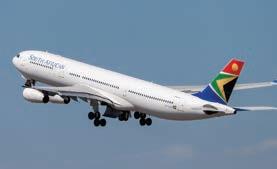
In terms of the Civil Aviation Act (No. 13 of 2009), any person who on board any aeroplane:
• By force or threat of force or by any other form of intimidation and without lawful reason seizes, or exercises control of, that aeroplane;
• Commits an act of violence, including an assault or threat, whether of a physical or verbal nature, against any person, including a crew member, which is likely to endanger the safety of that aeroplane;
• Wilfully interferes with any member of the crew of that aeroplane in the performance of his or her duties;
• Commits any nuisance or disorderly or indecent act;
• Is in a state of intoxication;
• Behaves in a violent manner towards any person, including a crew member, which is likely to endanger the safety or security of the aeroplane or of any person on board such aeroplane;
• Smokes in a toilet or any other place on the aeroplane where smoking is prohibited;
• Tampers with a smoke detector or any other safety-related device on board the aeroplane;
• Operates a portable electronic device when the operation of such a device is prohibited;
• Refuses to obey a lawful instruction given by or on behalf of the pilot-in-command for the purpose of ensuring the safety of the aeroplane or of any person or property on board, or for the purpose of maintaining good order and discipline on board the aeroplane; or
• Conveys any conventional arms, drugs or animal product in an aeroplane; is guilty of an offence and, on conviction, liable to a fine and/or imprisonment.
FOR THE PURPOSES OF THIS CHAPTER:
1. “Animal Product” means any part or portion of, or product derived from, any animal, including any such part, portion or product in any processed form which is possessed contrary to the provisions of any other Act of Parliament or regulation promulgated in terms of such Act; 2. “Drugs” means any drug as defined in Chapter 1 of the Drugs and Drug Trafficking Act, 1992 (Act No. 140 of 1992), that has not been acquired, bought or possessed lawfully as contemplated in Chapter 4 of that Act; 3. “Conventional Arms” bears the meaning assigned thereto in Chapter 1 of the National Conventional Arms Control Act, 2002 (Act No. 41 of 2002), some exceptions exist.
PLEASE NOTE: In terms of International Civil Aviation legislation, the Commander (Captain) of the aircraft is authorised/empowered to take any action deemed necessary, including restraint of any persons or property on board. In terms of this authority, the Commander may request and/or authorise any member of the crew to render assistance in terms of restraint of, or action against such offenders. In terms of SAA’s right of refusal of carriage, SAA reserves the right to refuse boarding to any person who is intoxicated or who, under reasonable grounds, is believed to pose a potential danger to safety and/or good order and discipline on board its aircraft.
SAA has your safety at heart. Please read these pages carefully
A safety pamphlet is provided at your seat. Please familiarise yourself with its important information and note the location of your nearest emergency exit.
For your own safety, sleeping on the floor is prohibited. In the event of an irregular occurrence and/or emergency, passengers sleeping on the floor would not have access to seat belts and oxygen masks.
Seat belt signs are visible throughout the cabin. Whenever the signs are illuminated, fasten your seat belt. Keep it fastened throughout the flight. If sleeping under a blanket or duvet, fasten the seat belt over it so the cabin crew does not need to wake you in the event of turbulence.
On the Airbus 330-300, if you are seated in Premium Class, ensure your shoulder belt is fastened for take-off and landing. Passengers less than 1.3m in height are not required to make use of the shoulder belt.
After landing, remain seated until the aircraft has come to a complete stop and the Commander has switched off the seat belt signs.
In preparation for take-off or landing, ensure flight mode is selected on your PED and it is switched off, your baggage is stowed, your tray table, footrest, armrest and TV screen are stowed, your window shutter is open, your seat is in the upright position and your seat belt is fastened.
As per South African Civil Aviation Authority regulations, smoking on board is prohibited. This includes the smoking of any artificial device or e-cigarettes.
The use of the bassinet is restricted by infant size and weight. The bassinet can comfortably accommodate an infant of 75cm in length. The bassinet is designed to carry a maximum load of 11kg. In the interest of safety and to prevent exceeding the weight limitation of the bassinet, it is recommended that the weight limitation of the infant not exceed 10kg. The size and weight limitation of the bassinet must not be exceeded. The infant must fit into the bassinet.
Note: An infant aged 9 to 12 months has an average length of 74cm and a weight between 9,2kg and 11,4kg.
When travelling on international flights from South Africa, passengers are restricted from carrying certain LAGs in the aircraft cabin. These rules are aligned to International Civil Aviation Authority standards. Passengers wishing to carry essential liquids with them on board the aircraft must place them in a resealable, clear plastic bag with a maximum capacity of one litre and a total diameter of 80cm. No item containing liquid may exceed 100ml and it must fit comfortably inside the sealed bag. If these limitations are not adhered to, items will be confiscated by airport security, and SAA will not be in a position to recover them for passengers. When proceeding through airport security checkpoints, the bag holding these items must be separated from other cabin baggage. Items that are exempt from LAG restrictions and that may be carried on board, without being placed in a clear plastic bag, are:
• Baby formula/milk and baby food in small containers, provided the child is travelling with the person carrying these.
• Essential and other nonprescription medicines not exceeding 100ml per container, including saline solution and products such as eye drops and contact lens solution.
• Liquids, gels and juice for diabetic passengers who require them for medical reasons.
• Solid cosmetics and personal hygiene items such as lipsticks in tubes, solid deodorants and lip balms.
Any duty-free LAG products purchased after security checkpoints should be placed in special security bags at the store, and passengers connecting to further destinations are advised to keep these sealed throughout their journey.
Storage for your cabin baggage is provided either under the seat in front of you or in the overhead stowage compartment. For your own safety and that of the passengers around you, please do not exceed the weight limitations of these compartments and ensure that items placed in them are securely positioned. Be careful when opening the overhead stowage compartments as some luggage may have shifted during the flight.
SAA will accept two pieces of cabin baggage, neither of which may exceed 56cm x 36cm x 23cm in dimension and 8kg in weight.
SAA will accept one piece of cabin baggage not exceeding 56cm x 36cm x 23cm in dimension and 8kg in weight. These baggage limitations apply to all passengers travelling in Economy Class, regardless of their Voyager or other status.

In accordance with the IATA Dangerous Goods Regulations, each passenger may carry a maximum of 15 PEDs on board.
The use of PEDs is restricted due to the possibility of electromagnetic interference (EMI) with aircraft frequencies that may adversely affect the performance of aircraft systems and/or equipment.
PEDs are categorised into nontransmitting and transmitting electronic devices.
Non-transmitting devices (PEDs) are not designed to transmit or receive data, but can still emit EMI at low levels; Transmitting devices (T-PEDs) are designed to transmit or receive data through various technologies, including cellular, wireless (Wi-Fi) and other radio frequencies (i.e. Bluetooth and infrared).
Many T-PEDs allow the user to disable the transmitting function (e.g. flight mode, flight-safe mode, airplane mode, Wi-Fi disabled, Bluetooth disabled). When disabled, the T-PED becomes a non-transmitting device.
To manage the safe use of PEDs in the passenger cabin, PEDs are divided into four categories: unrestricted, limited, restricted and prohibited. Each category provides restrictions governing the use of the PEDs during each phase of flight. The following table provides a summary pertaining to the restrictions governing each category.
• Electronic watches;
• Cameras;
• Hearing aids;
• Heart pacemakers;
• Approved medical portable electronic devices (MPEDs).
Can be used any time.
• Electronic games with Wi-Fi disabled/not installed;
• Digital media players;
• Virtual reality headsets.
Prohibited during taxi, take-off, initial climb, approach and landing. May be used in-flight once the seat belt/ PED sign has been switched off.
Transmitting function must be disabled on aircraft door closing.
• Mobile phones and smartphones;
• Laptops, tablets, PDAs;
• eReaders.
Transmitting function may be used before doors close and after landing once the aircraft has left the active runway.
Lightweight/small handheld devices may be used during taxi, take-off, initial climb, approach, landing with flight mode, flight-safe mode, airplane mode activated and/or Wi-Fi and Bluetooth disabled. Transmitting function must be disabled on aircraft door closing.
The items below are prohibited at all times:
• Mobile phones without flight mode, flight-safe mode, airplane mode;
• AM/FM transmitters & receivers (including televisions, radios);
• Remote-controlled devices (passenger owned);
• VHF scanners/receivers;
• Two-way transmitters such as walkie-talkies, amateur radios.
NOTE: Lightweight/small handheld PEDs are devices that can be held firmly in one hand or in the user’s pockets, allowing one hand free to release the restraint belt. Larger PEDs, such as laptops, must be placed in an approved stowage location during taxi, take-off, initial climb, approach and landing. Seat pockets might not be approved to hold the weight of a laptop. CCMs should ensure that the stowage location used is appropriate to accommodate the size and weight of the device.
Trailing cables from devices (and/or headsets/headphones) must be secured to prevent trip/entanglement hazards via the following means: To be placed on the seat, in the seat pocket, or in an approved stowage location; or to be kept on one’s person, or placed in one’s cabin baggage. Due to the risks involved with overheating lithium batteries and ensuring effective crew response, charging of devices is prohibited during taxi, take-off, initial climb, approach and landing.

approved by the US Federal Aviation Administration (FAA). This device may be used to supply continuous oxygen. The POC may not be used with a mask. The passenger must provide a nasal cannula.
(NOTE: No additional cost will apply when passengers provide their own FAA-approved battery-powered POC.)
• The passenger must supply the extra batteries. The spare batteries must be carried in the passenger’s hand baggage and declared to the cabin crew. The spare batteries must be fully charged.
• The spare batteries must be individually protected in order to prevent short circuits – by placement, and in the original retail packaging, or by otherwise insulating the terminals (e.g. taping over the exposed terminals or placing each battery in a separate bag or pouch).
• The spare batteries must be carried in the passenger’s cabin hand baggage.
• Only three batteries are allowed on board: one inside the machine and two spares. The power of each battery must not exceed 160Wh.
• The permissible watt-hour rating is 160Wh. Because the 24-cell battery packs of the Inogen One G2 consist of two 12-cell battery packs delivering 195,4Wh, exceeding the permissible rating, this battery pack is not permissible on board. The Inogen One G2 must be powered with an alternate acceptable battery pack.
• A passenger who requires continuous-flow oxygen must book an oxygen cylinder (for regional and domestic flights only), and not a concentrator, subject to operational requirements. However, passengers may bring their own batteryoperated continuous-flow oxygen concentrators.
• Some oxygen concentrators work on demand; therefore, passengers are advised that they will receive oxygen flow only on inhalation.
• Medical portable electronic devices provided by passengers must be battery-operated.
• Because aircraft power is not the same as other electrical power, equipment plugged into an electrical power outlet in an aircraft could cause damage to both the aircraft and the equipment.
• The safety of the aircraft may be compromised due to electro-magnetic interference (EMI), especially during the critical phases of take-off and landing, and on the ground during alignment of the instrumentation and software loading.
>> THE FOLLOWING PASSENGERS ARE REQUIRED TO BOOK VIA THE CALL CENTRE OR TRAVEL AGENT:
• Travellers who require a medical escort or in-flight medical treatment
• Travellers who have a communicable disease or infection
• Your doctor must state whether the condition poses a direct threat to the safety or health of others, and advise about precautions necessary to prevent transmission.
• Travellers who have been operated on or admitted to hospital in the two weeks before the flight
• Your doctor must state whether you have recovered sufficiently, and whether your condition has stabilised enough to travel by commercial air transport.
• Travellers suffering from an acute or chronic medical condition for which they might need to take medication during the flight
• Travellers who suffer from any acute or severe symptoms, such as difficulty breathing, high fever, severe pain, etc.
• Travellers who recently suffered a major medical incident (heart attack, heart failure, stroke, and respiratory failure or recent pneumothorax)
• Travellers who had thrombophlebitis
• Travellers who might develop any symptoms or behaviour that could have an adverse effect on the welfare of other passengers on board
• Travellers whose medical condition might be aggravated during or because of the flight
• Travellers who are travelling with a premature infant or an infant with a medical condition
• An unaccompanied minor with a medical condition
• Travellers with an unstable mental illness or impairment
SERVICE DOGS
• A service dog accompanying its owner is accepted on most flights in the passenger cabin of any class, free of charge.
• The dog may, however, not occupy a seat, and must not be kept in a location that would block escape routes in the event of an emergency.
• The service dog must be properly harnessed, and remain with the traveller at all times.
• Travellers with service dogs are required to contact their local South African Airways office prior to booking for further information, flight eligibility, and to be allocated a suitable seat.
• Ask our staff at O.R. Tambo International Airport where the local animal relief area is situated. For service dog transportation, please visit gov.za/services/import/importanimals-and-animal-products
For travellers with limited mobility, we offer the following assistance:
• Wheelchairs at the airport: We can arrange for wheelchair transpor t from check-in to the boarding gate, and from the aircraft to the arrivals hall at your destination.
• Travelling with your own wheelchair:You are welcome to check in one wheelchair as baggage, free of charge.
• Each traveller is entitled to one mobility aid, e.g. wheelchair, crane or crutches, free of charge, in addition to their standard baggage allowance. These items must be small enough to be stowed without obstruction, and must meet SAA baggage policy requirements.
• Travellers requiring the use of wheelchairs or mobility aids are advised to make their travel arrangements in advance.
Passengers should ensure that they keep their medication in their hand luggage, and have a medical letter on hand outlining their condition and medication in case they encounter difficulties while travelling.
• Medicines required on board must be carr ied in cabin baggage, and passengers must carry a letter from their treating physician. All excess medicines and liquids are to be carried in checked baggage. When taking liquids through security control, passengers should please ensure that they comply with the airport’s restrictions.

• All prescription medicine, syringes and needles used by diabetics must be sealed and properly labelled.
• The quantity of syringes and needles is limited to the amount required for the flight.
• They must be disposed of in a safe manner.
• For medication requiring refr igeration, passengers should make sure that they bring a cooler box with ice packs, and keep the medication with them for the duration of the flight.
• Medical clearance to fly is only necessary if you are having complications with your pregnancy.
• Domestic travel is per mitted up to 36 weeks for a routine pregnancy.
• International travel is permitted up to 35 weeks for a routine pregnancy.
All pregnant women beyond 28 weeks of gestation must provide a letter from their obstetrician, general practitioner or midwife stating the following:
• Term of pregnancy
• Fitness to travel
• Whether it is a single, multiple or high-risk pregnancy
• Any possible complications, including hyper tensive passengers, history of premature labour, etc.
Infants are allowed to travel from seven days of age. Passengers are allowed to fly 10 days after major abdominal surgery. The special-bookings process must be followed.
Travellers dependent on colostomy bags must ensure that they have an empty bag at the start of the journey.
Passengers are responsible for carrying enough bags for the duration of the flight, and disposing of them in a responsible manner upon arrival at destination.
Passengers who have serious allergies must bring it to the attention of our reservations department. Passengers are required to bring their own emergency medication, e.g. injectable epinephrine, such as an EpiPen. South African Airways does not take responsibility for any allergens that may arise from food, medications, pets, rodents, dust mites, or nut and other allergens.
Our cabin crew will assist with loading and retrieval of carry-on items, and small assistive devices stowed on board the aircraft. These items must be small enough to be stowed without obstruction, and must meet SAA baggage policy requirements.
All our aircrafts are equipped with an on-board wheelchair, allowing passengers to be escorted to and from the toilets. We also have seats with movable armrests that facilitate the transfer of a passenger from the on-board wheelchair to the seat and vice versa.

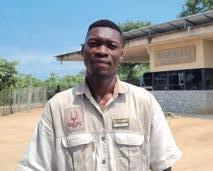




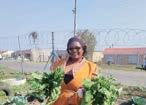


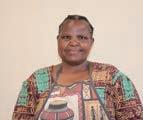







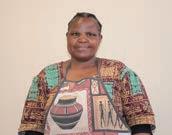

The Social Employment Fund (SEF) supports civil society organisations to create work that makes a difference to participants, strengthens communities, and creates lasting impact. Its Strategic Implementing Partners (SIPs) currently operate at over 2400 sites across the country, supporting work that matters to communities – strengthening food security, education outcomes, care services, bio-diversity protection, informal settlement upgrading, community health, supporting survivors of gender-based violence – and much more.
Since its inception in 2023, over 150,000 people have participated in the programme. Many have never worked before – but have been able to use the skills, capabilities, self-esteem and confidence gained to take the next steps on their pathways out of poverty – into better jobs – or into livelihood and micro-enterprise activity.
To learn more about the SEF visit www.socialemploymentfund.co.za #SEFSuccessStories
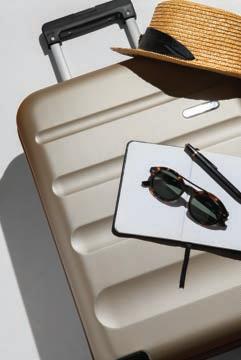
HFind out how to make the most of the overhead storage bins for your hand luggage on your next flight.
ere’s the low-down on how to ensure you keep your hand luggage with you instead of having it taken away by the cabin crew just before you board. The bonus? You will also not be that person who gets sideeye from other passengers for trying to wrestle oversized parcels into the overhead bins.
First off, make sure the carry-on luggage you pack at home is the correct size. For economy class, that’s one piece (minus a handbag) the size of a small tog bag (maximum size: 56cmx36cmx23cm) and with a maximum weight of 8kg. Business class travellers get more room – double, to be exact – with two 8kg bags with the same maximum dimensions as allowed in economy class.
In both economy and business class, you are also allowed a personal item – a small handbag or a slimline laptop bag (maximum size: 30cmx40cmx10cm).
While overhead bin space is available on a first come, first served basis, in an ideal world, and if everyone keeps to these rules, then the overhead bin space directly above your seat is ‘yours’.
If this space is not available, your regulation carry-on luggage will be accommodated in another overhead bin.
Sadly, it is often the case that travellers bring oversized bags, or too many bags, and hog the space. You are within your rights to point this out to cabin crew; carry-on luggage limits must be enforced by cabin crew in accordance with SAA’s standard operating procedure.
SAA cabin crew also try to remove oversized carry-on luggage as travellers board, but it can happen that while we are busy with one person, others who also have oversized, or too many carry-on pieces, are able to slip by.
Another thing to remember if you plan to shop at duty-free outlets, is that the items you buy also take up the limited space available in the overhead bins. Either plan space for these items in your carry-on bags, or keep your shopping to a reasonable limit to ensure that you don’t hog space that should go to other people.
By sticking to the rules and being mindful of space, we can all enjoy a smoother, stress-free boarding experience.

Khoza is the first female executive director of Civil Aviation in SACAA’s 26-year history, where she continues to be an aviation pioneer and one of the most recognisable faces in the global aviation space. We sat down for a conversation with her.
You were recently reappointed for another term as the executive director of SACAA. Why is this continuity important in organisations?
Leadership stability provides continuity in productivity and service delivery, as well as an opportunity to deepen stakeholder relationships. Continuity builds trust and reliability, allowing organisations to effectively execute short- and long-term plans. This stability is essential for achieving measurable growth over time. At SACAA, continuity is imperative for maintaining high safety standards, fostering regulatory compliance, and promoting confidence in South Africa’s aviation system, both domestically and internationally. This appointment for a third term is a vote of confidence from the government; one I do not take lightly. It means the efforts and results that team SACAA produces are recognised at the highest level of our country. While this puts more pressure on us to achieve more, we are up for the challenge. I have been fortunate to lead a dynamic team, and the work we have done over the past 12 years speaks for itself.
During this time, SACAA has received invaluable support from the Ministry, the team from the Department of Transport, and the Board of Directors as we navigated unchartered territory, pushing boundaries to be recognised among Africa’s top achievers and among the best in the world.
Share highlights from your previous term, and your vision for the next term. The most significant highlights include:
• SACAA recorded eleven clean audits, as pronounced by the AuditorGeneral of South Africa, in the year-end audits conducted over the past 12 years.
• We also continue to meet our annual targets as outlined in our Annual Performance Plan. In the past 10 years, we achieved all our targets (100%) against our predetermined objectives and in one of these years we achieved 96%, having missed one target.
AVIATION
• In the safety audit conducted by the International Civil Aviation Organization (ICAO), a UN specialised agency charged with managing civil aviation safety and security, in South Africa, the State progressively improved our safety posture, moving from 77% to 91,11% between 2007 and 2023. This achievement placed us as No. 1 in Africa at the time and amongst the top 20 countries globally. The outcome of an
Poppy Khoza sits at the helm of the South African Civil Aviation Authority (SACAA), the regulatory body responsible for the safety and security of South Africa’s civil aviation industry.
international safety assessment by the Federal Aviation Administration (FAA) of the United States on South Africa ensured that the country retained its Category 1 status in 2021. This means that South African airlines can fly directly into the United States.
• In 2022, South Africa participated in an ICAO security audit, where the State achieved an unqualified outcome.
• The State’s security system is peer assessed by institutions such as the Transport Security Administration of the United States and has recently received permanent recognition.
• South Africa’s cargo security system is recognised by the EU in terms of their ACC3 programme.
• The above recognitions mean that our country’s cargo operators can conduct business in both the US and EU without the need to undergo individual assessments by both of these counterparts.
• SACAA introduced a state-of-theart card licence with security features that make it impossible to replicate. The card licence allows users access to their licensing information 24/7, from anywhere in the world, and the information is updated in real time. South Africa is one of a few countries worldwide with this type of aviation personnel licence.
GETTING THERE
SAA flies between Johannesburg and Durban several times a day. Visit flysaa.com
From 13-15 May, Durban welcomes tourism stakeholders from all over the world.
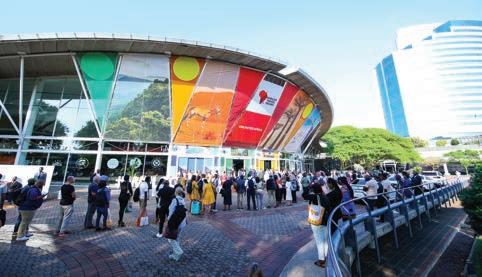
Africa’s premier tourism trade show, Africa’s Travel Indaba (ATI) takes place from 13-15 May 2025 at the Inkosi Albert Luthuli International Convention Centre (ICC) in Durban. Industry leaders, media professionals, and tourism stakeholders from around the world will attend to network and do business at the iconic trade show that showcases the best of Africa’s tourism landscape.
The trade show is designed to connect African tourism exhibitors with influential international and local buyers, destination marketing companies, and leisure tourism service partners. The event creates market access opportunities for African
tourism products, enabling business growth and investment in the sector.
The event will kick off with BONDay (Business Opportunity Networking Day) on 12 May, a dedicated platform for thought leadership and knowledge exchange. Developed in partnership with global tourism organisations, continental experts, and industry associations, BONDay offers a deep dive into emerging trends, sustainability practices, and digital innovations shaping the future of tourism in Africa.
ATI aims to celebrate Africa’s diverse landscapes, cultural heritage, and tourism excellence. Delegates can experience Durban’s vibrant spice markets, authentic Zulu culture, and stunning coastal and safari attractions,
while engaging in business networking at the Durban ICC.
Hosted in KwaZulu-Natal, the province is rich in history and natural wonders, including the Nelson Mandela Capture Site, the Ukhahlamba Drakensberg Park, and the Greater St. Lucia Wetland Park, making it an ideal backdrop for showcasing Africa’s tourism potential.
Delegates, media and visitors will have access to high-level discussions, tourism innovations, and first-hand experiences of Africa’s most soughtafter destinations. The future of African tourism, industry insights, and key developments shaping the sector will be discussed at the event. indaba-southafrica.co.za








The hybrid Instax Wide Evo 16MP analogue and digital camera is the perfect gadget to capture past and present travels. It o ers a 3.5-inch LCD screen, a sel e-mirror and a microSD card slot. It also supports macro and wide angle mode. Price: R6 599.
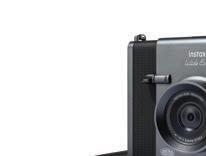






Honor’s new agship Android Magic7 Pro promises longevity with its powerful Snapdragon 8 Elite chip, 200MP advanced camera, and two-day battery life. It’s perfect for video calls, reading, and watching TV or movies. A 512GB storage means never deleting pictures and videos of family or precious travel memories.

Thule’s nifty Aion toiletry bag keeps travel essentials organised and accessible through a clear removable and wipeable pouch. This makes going through airport security a breeze, which complies with TSA air travel rules. It has a 5L volume and is made from water-resistant recycled materials. Price: R1 799.
Did you know that SAA flies daily between Johannesburg to Dar es Salaam, a coastal city in Tanzania? This makes it a perfect stepping stone to Zanzibar, which is part of the Tanzanian archipelago. Start your travels in Dar and spend about two nights here exploring the Mikumi National Park, the Kunduchi Wet ’n Wild Water Park, the Kariako Bazaar, local museums, fish markets, and beaches. Then take a ferry into Zanzibar, which is a one hour and twenty minute sail, with multiple daily o erings. Explore the island’s rich culture by going on a spice tour in Stone Town, visit the Freddie Mercury house/museum, snorkel in Mnemba Island, 4.5 kilometres o the coast of Zanzibar, or sign up for a traditional cooking class. The island also o ers various walking tours, quad biking, and other unique localised experiences. Whether you’re on honeymoon, familymoon, birthday trip or a girls’ getaway, there’s something for everyone. South African passport holders don’t require a visa to visit Tanzania. Feeling spontaneous? Visit flysaa.com to book flights.
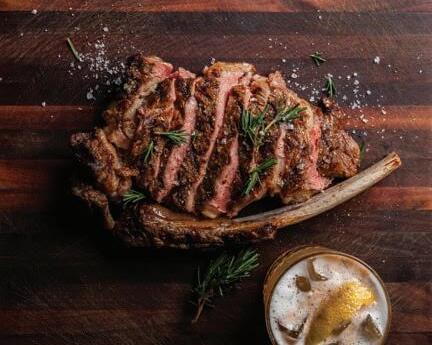
Price: R29 999.




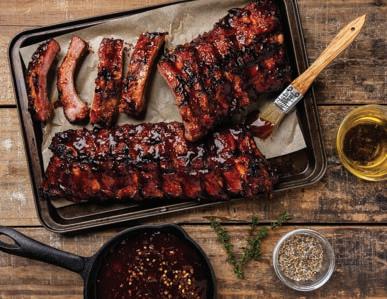






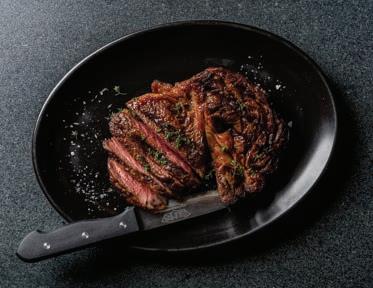










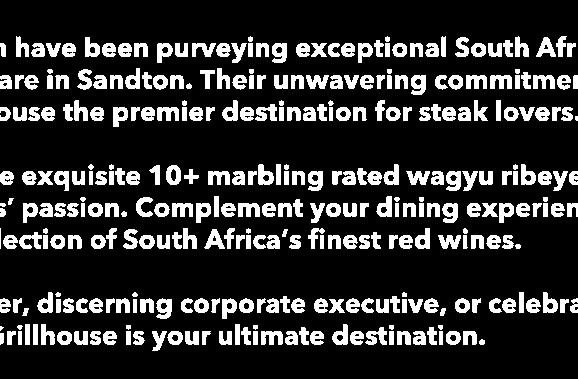

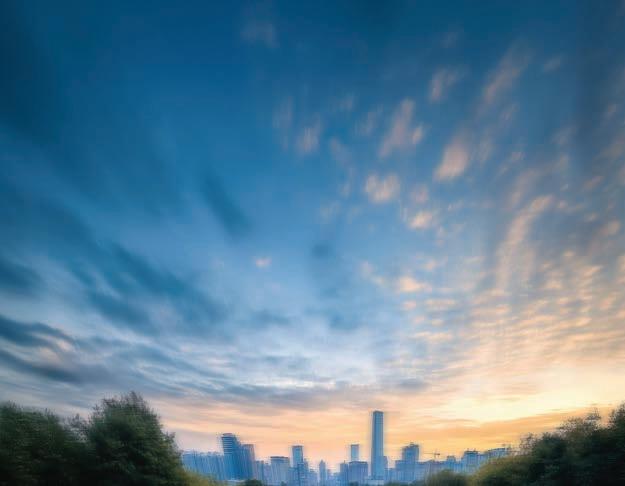


performance and comfort; and the five-seater Overtrail
WORDS Steve Smith
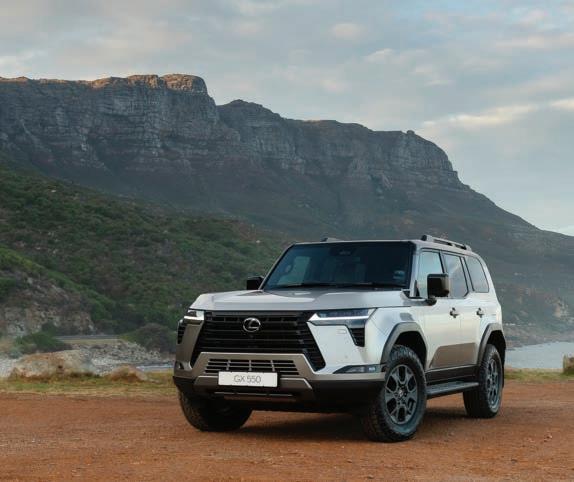
If you’re looking for road presence, this new Lexus certainly has it. Sporting Lexus’ trademark angular lines and a version of the iconic spindle grille, the GX is a big slab of brutalist architecture on wheels. Especially in the Titanium Carbide Grey you see here. It’s distinctive thick, squaredoff bonnet, and cladded, muscular wheel arches reinforce its off-road prowess. And that gets ramped up in Overtrail spec where exclusive design elements, including 18-inch wheels, all-terrain tyres, a 20mm wider tread, and reinforced under protector, mean you can head off the tar with extreme confidence.
Two new SUVs just launched in SA that offer 4x4 capabilities at two very different price points. Meet the luxurious LEXUS GX 550 and the stylish – and significantly cheaper – RENAULT DUSTER.
of its sibling, the Toyota Land Cruiser Prado, and you don’t have to be a 4x4 fundi to know that legendary Toyota has long been the goto choice for off-road adventures. The Lexus shares the Toyota’s GA-F global architecture platform with its rugged body-on-frame construction. And if you take a look at both cars side-on, there’s no doubt of their shared DNA.
That’s a confidence that doesn’t merely come from a set of grippy rubber. This GX is basically the fancy version
There will also be no doubt as to Toyota Land Cruiser Prado owners’ unending jealousy, as one piece of DNA not shared is the new GX’s more powerful engine. As opposed to the Toyota’s 2.8-litre four-cylinder turbodiesel it shares with the Hilux bakkie (150kW/500Nm), the GX has a twin-turbocharged 3.5-litre V6, producing 260kW and a healthy 650Nm of torque. Paired with a 10-speed auto ‘box,
The Duster’s exterior cladding is made from Starkle, a new material containing up to 20% recycled polypropylene. This shielding protects against minor bumps and scratches.

there will be no shortage of power, whether you are on tar, gravel, or more challenging off-road terrain. Advanced systems such as the Electronic-Kinetic Dynamic Suspension System (E-KDSS) and Multi-Terrain Select (MTS) provide unmatched traction and stability on any terrain. With six modes – auto, dirt, sand, mud, deep snow, and rock – you can adapt the GX to a wide range of conditions.
Lexus GX 550 Overtrail 3.5T R1 766 000
Lexus GX 550 Overtrail 3.5T Bi-Tone R1 776 200
Lexus GX 550 SE 3.5T R1 829 000
Proof that “go large or go home” is not necessarily true comes from France. Romania actually. You don’t have to go home if the Lexus is outside your budget because, if you would still like a little off-road capability, and you want something a little more comfortable than the basic, utilitarian Suzuki Jimny, the all-new third-generation Renault Duster is the vehicle for you.
Sourced from Renault’s sibling brand Dacia in Romania – and known as the Dacia Duster in Europe – this budget SUV has sold 2.2 million units globally since 2010, and is marketed here as a Renault, where over 26 000 generation 1 and 2 Dusters have been driven off dealership floors. In our market, the Duster developed a well-deserved rep as an affordable, go anywhere model that’s rather good-looking
too. And I think you will agree, the Duster’s designers really nailed it in the looks department with this new one. It’s a vehicle that looks very different from its predecessors – the cladding behind the front fender and the alloy wheel design are basically the only nods to the previous generations. The rest of the new Duster makes a bold and assertive statement with a striking new nose that forgoes the previous generations’ softer curves for something altogether more angular and tougher. Along with those squinty headlamps and thinner grille, thicker cladding on the sills now extending over the wheel arches give the new Duster a way more purposeful stance.
The 4WD version of the Duster comes with a mildhybrid powertrain that combines a 1.2-litre three-cylinder turbo petrol with a 48V battery and an electric motor to assist the internal combustion engine. That all means 96kw of power that’s delivered via a six-speed manual gearbox. To manage loose terrain, it also comes with 4WD Terrain Control that has five driving modes – auto, snow, mud/ sand, off-road and eco – and a decent ground clearance of 217mm (between axles), along with class-leading optimised approach and departure angles. Downhill speed control will give you added confidence on steep slopes and offroad driving information, like lateral tilt, uphill/downhill pitch, and torque distribution, is displayed on the 10.1-inch infotainment touchscreen.
Renault Duster Zen 6MT 4WD Mild Hybrid R549 999







